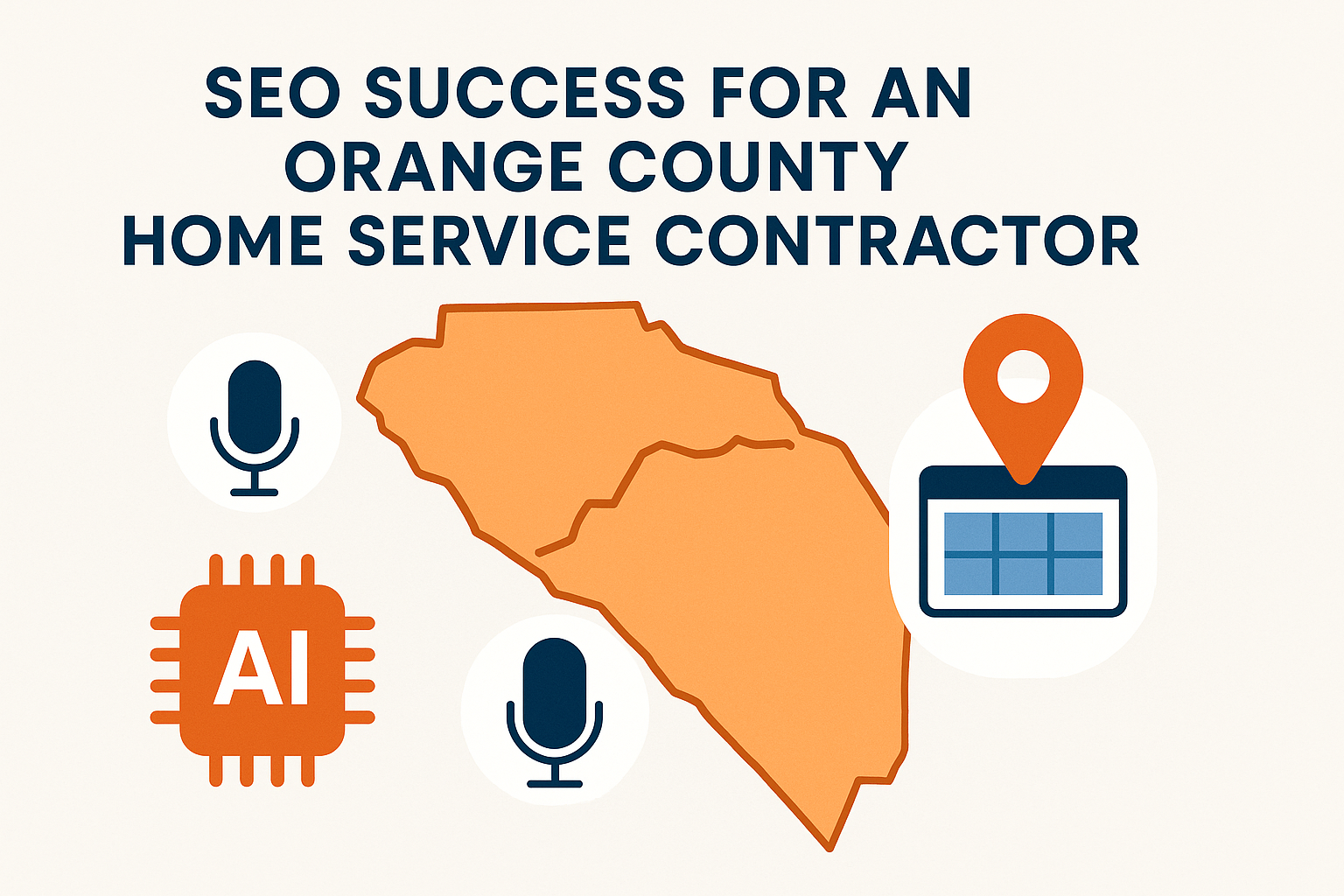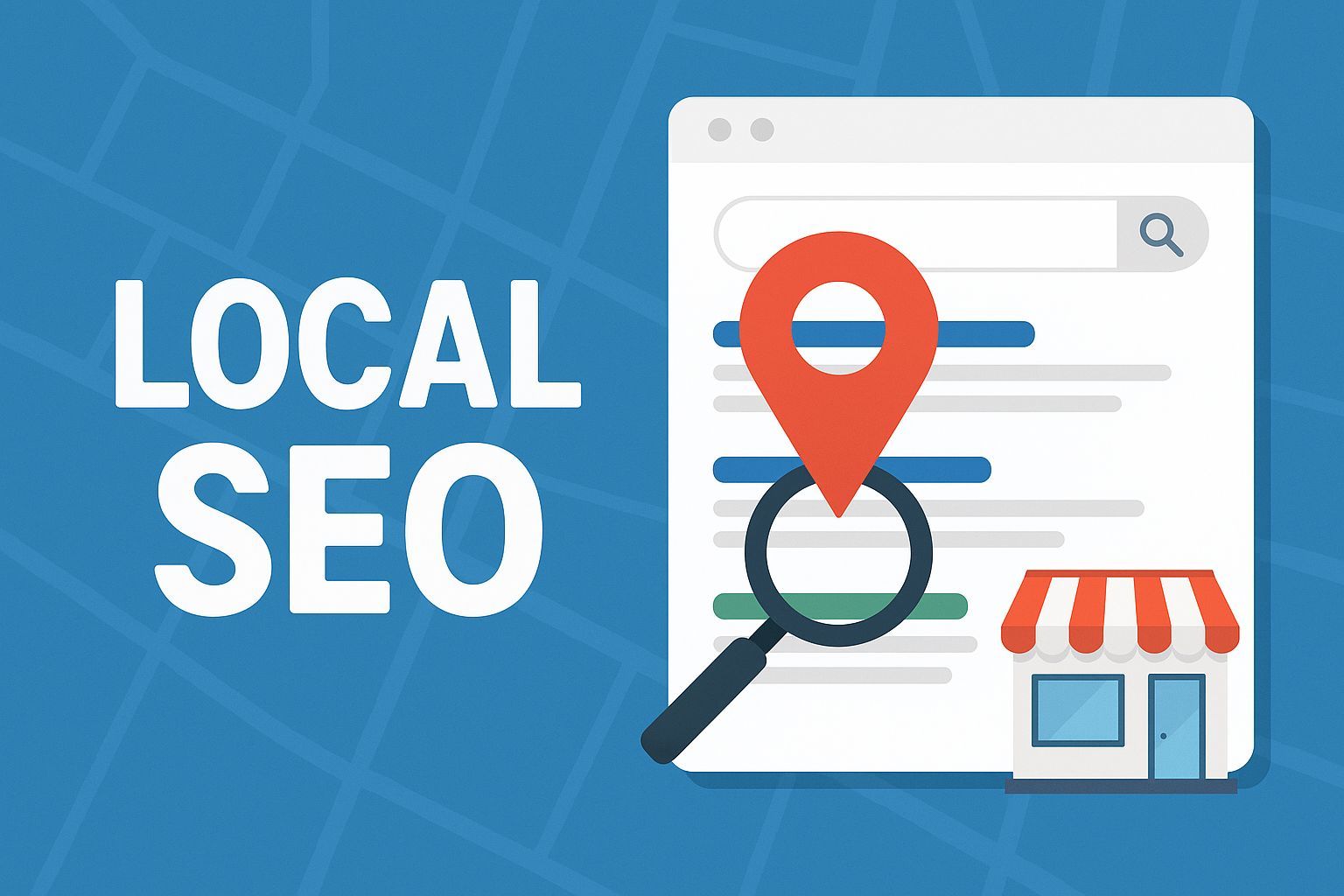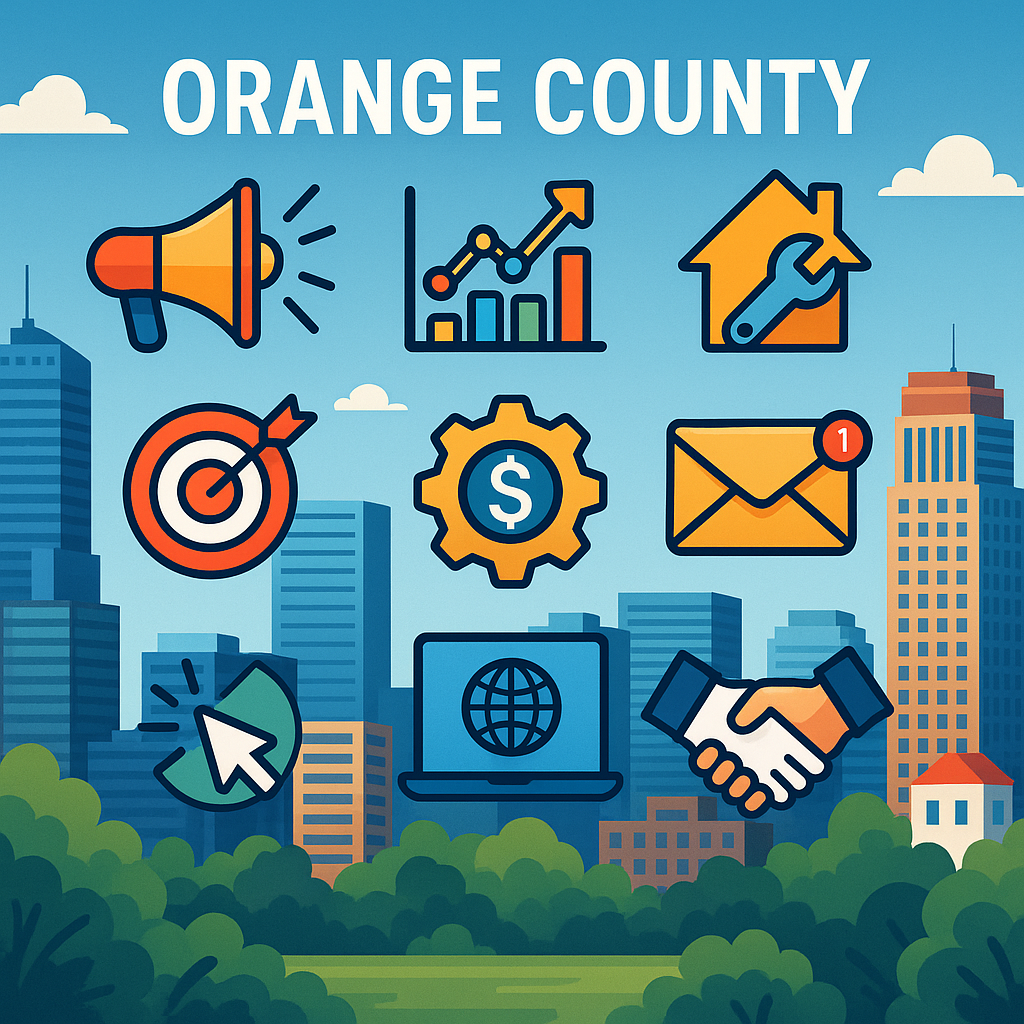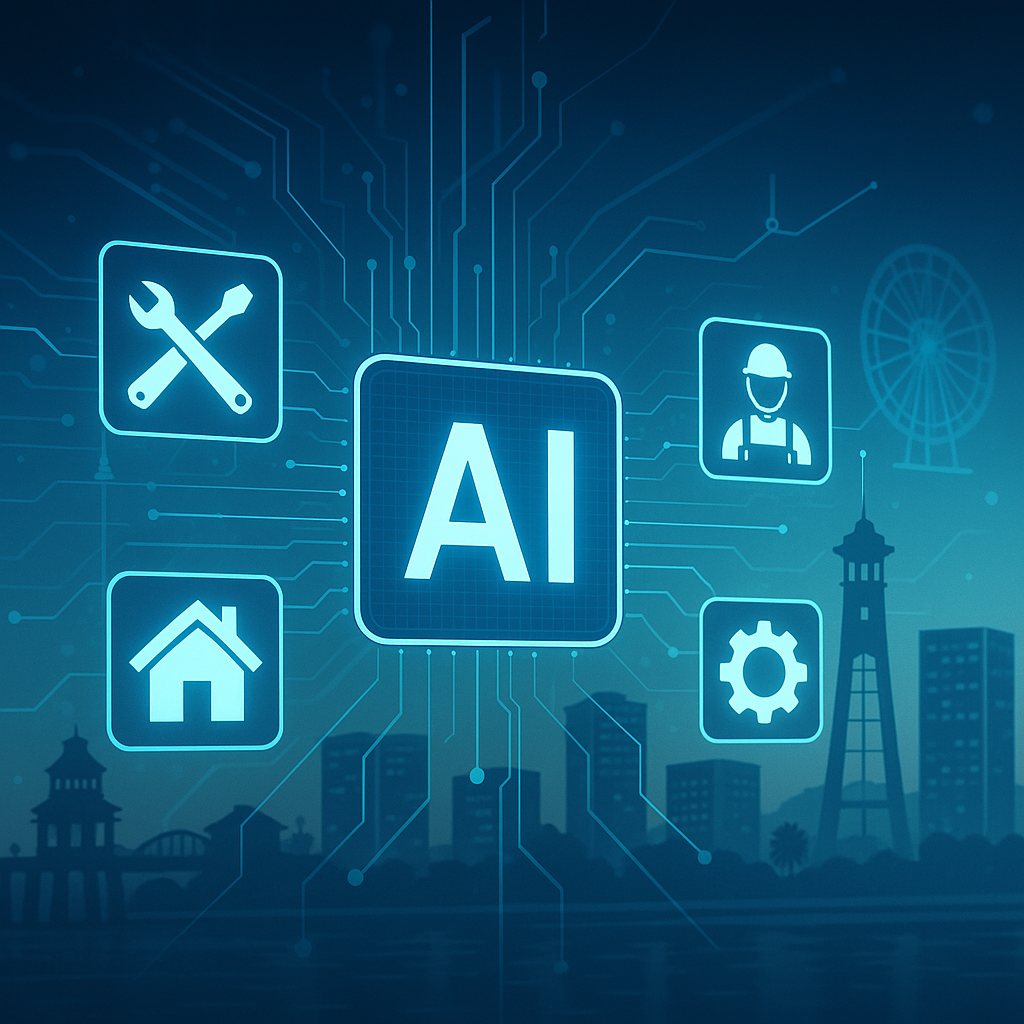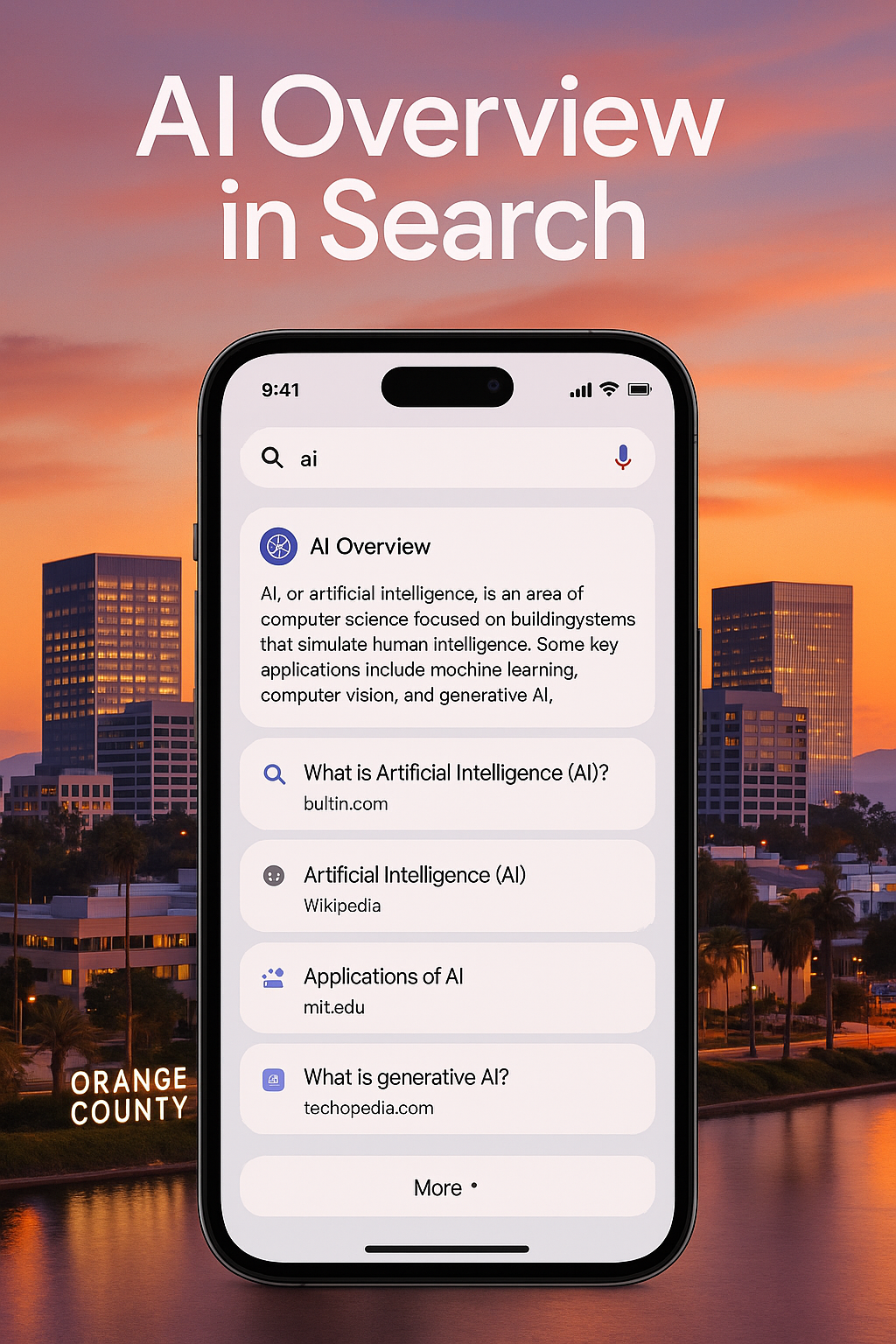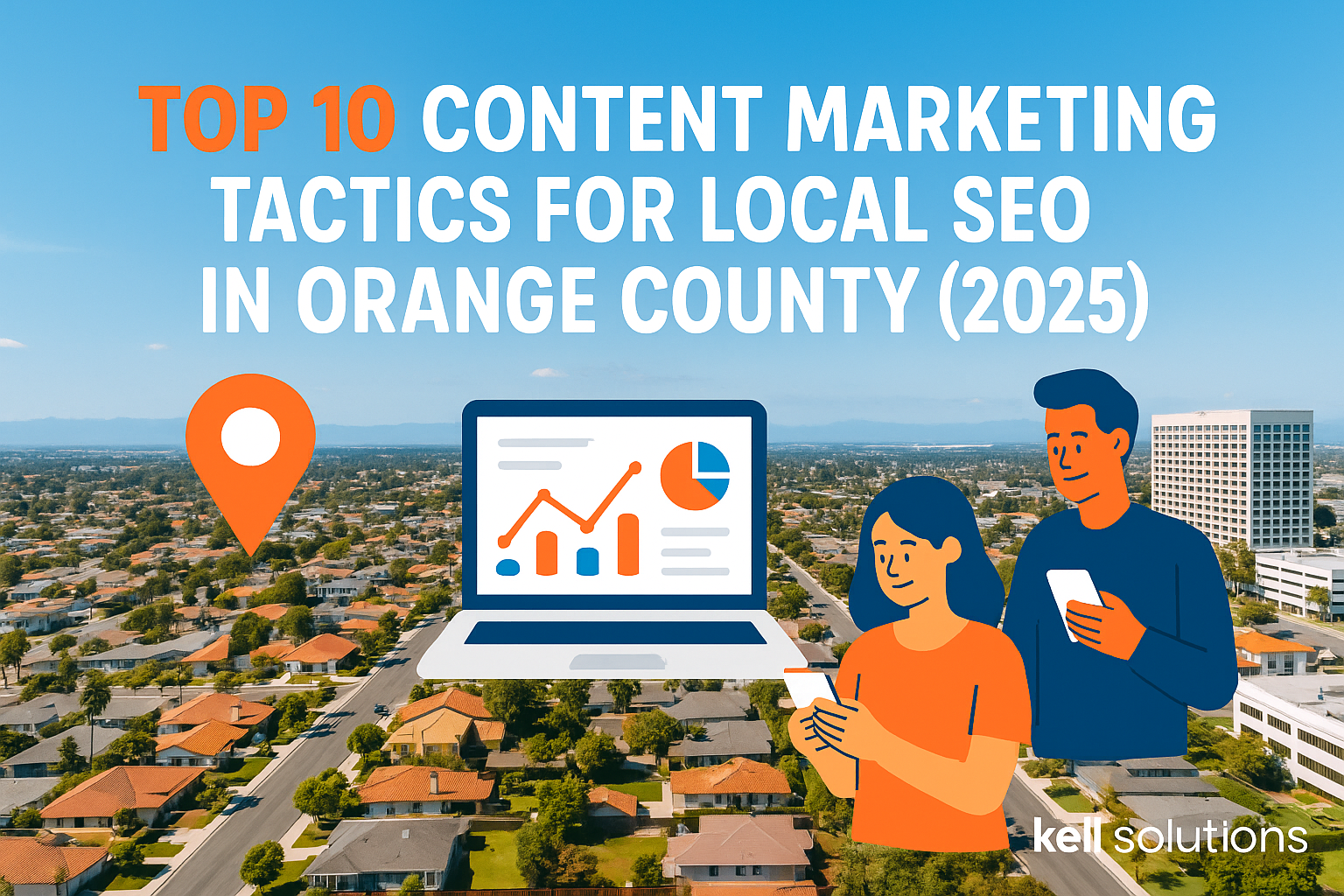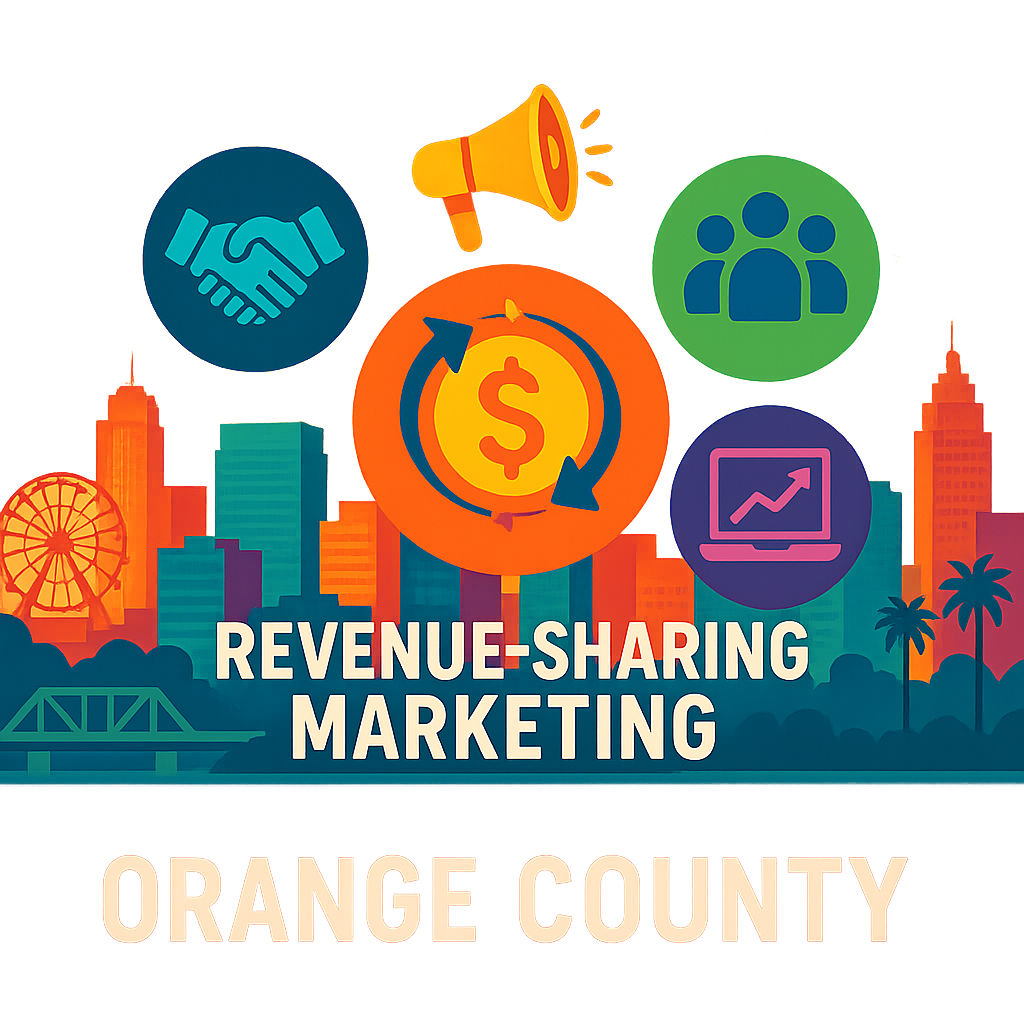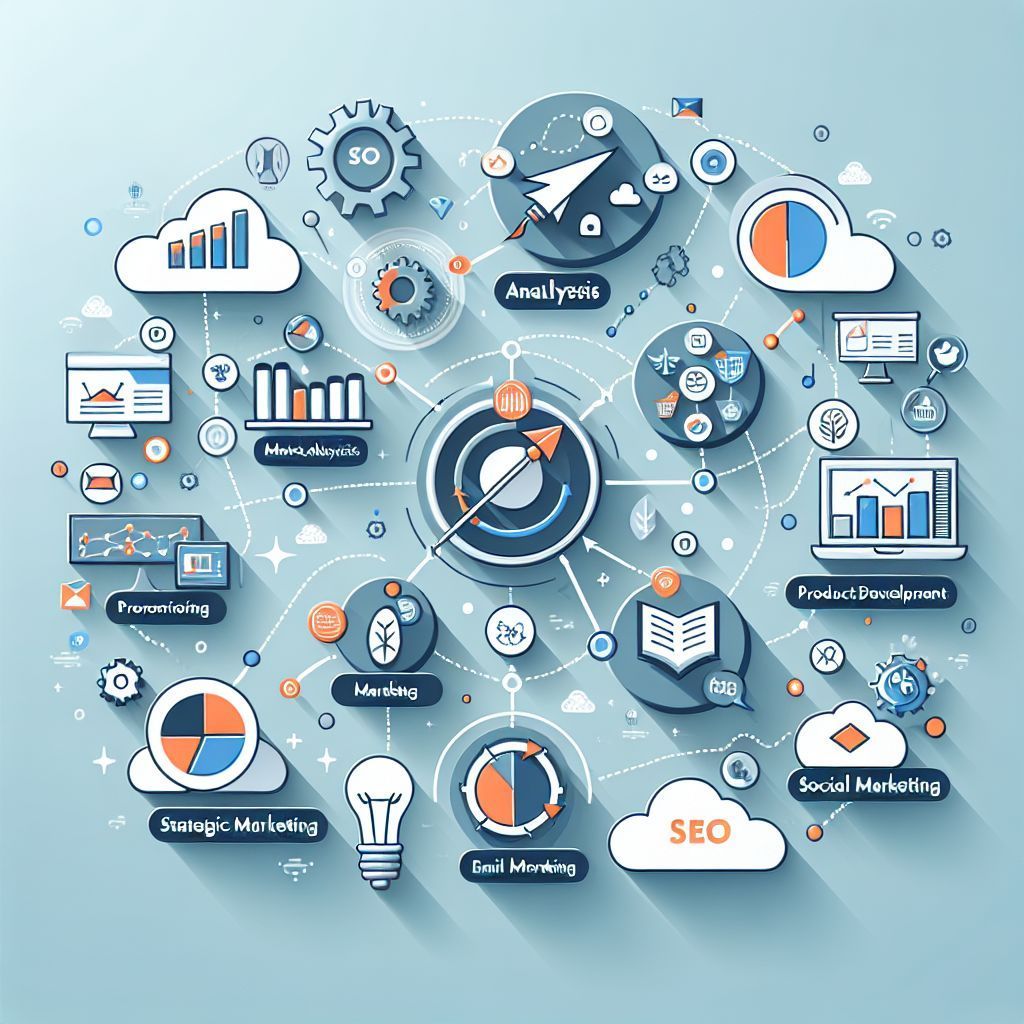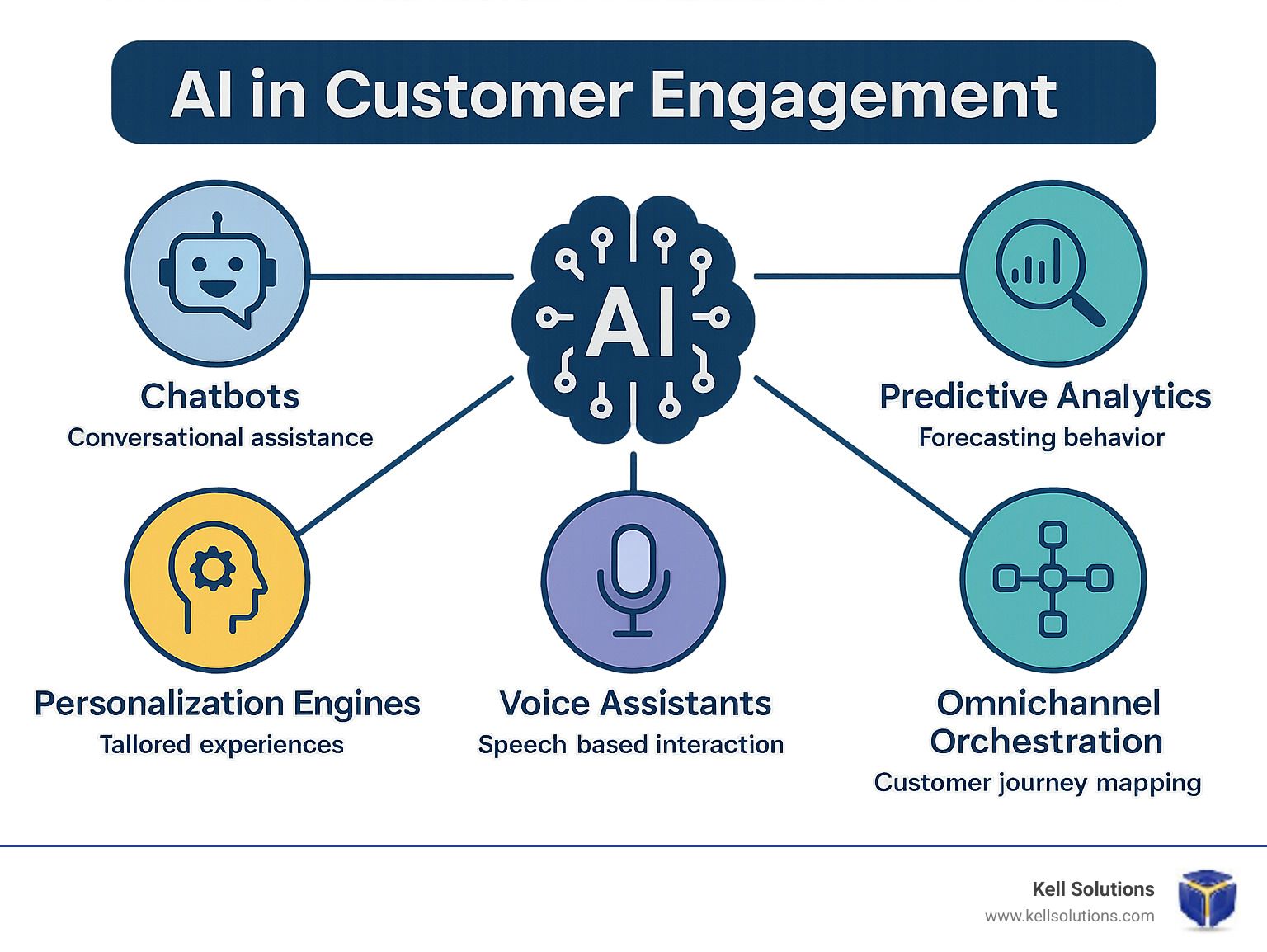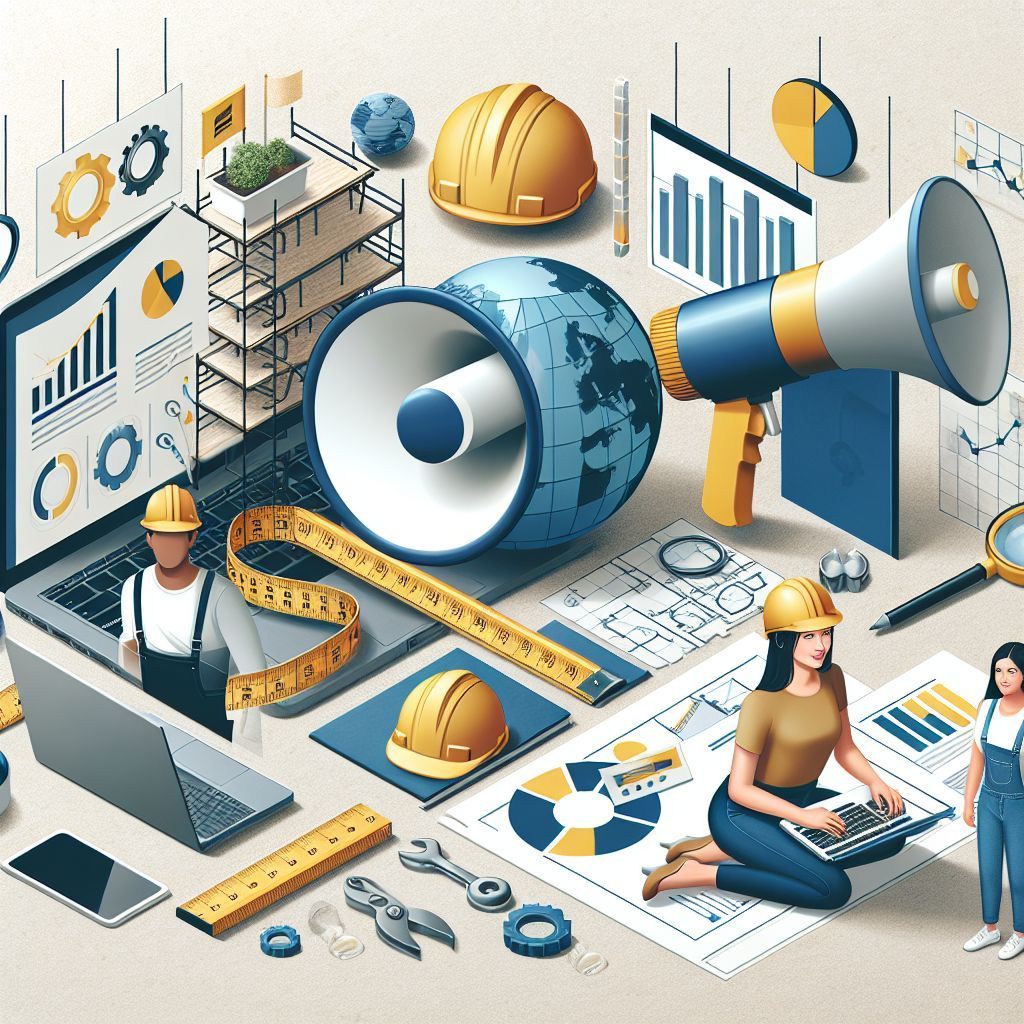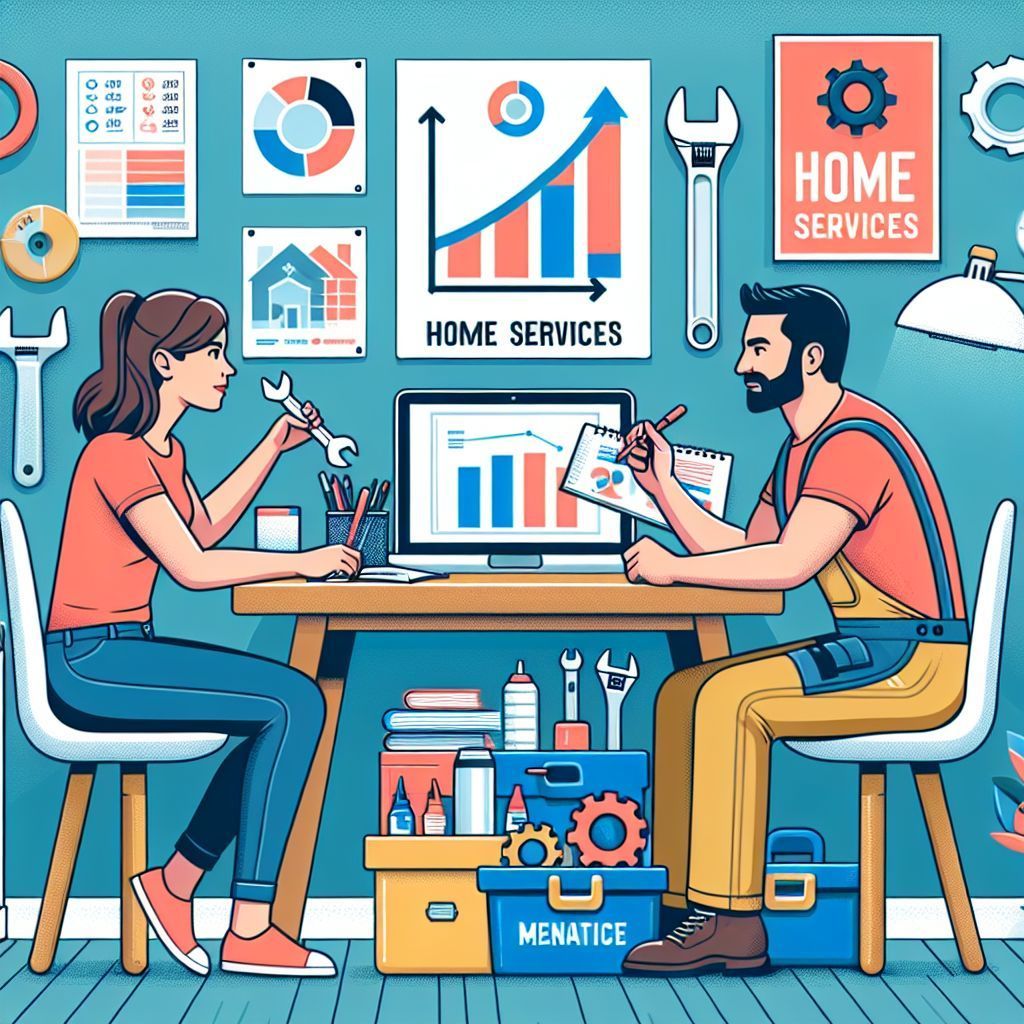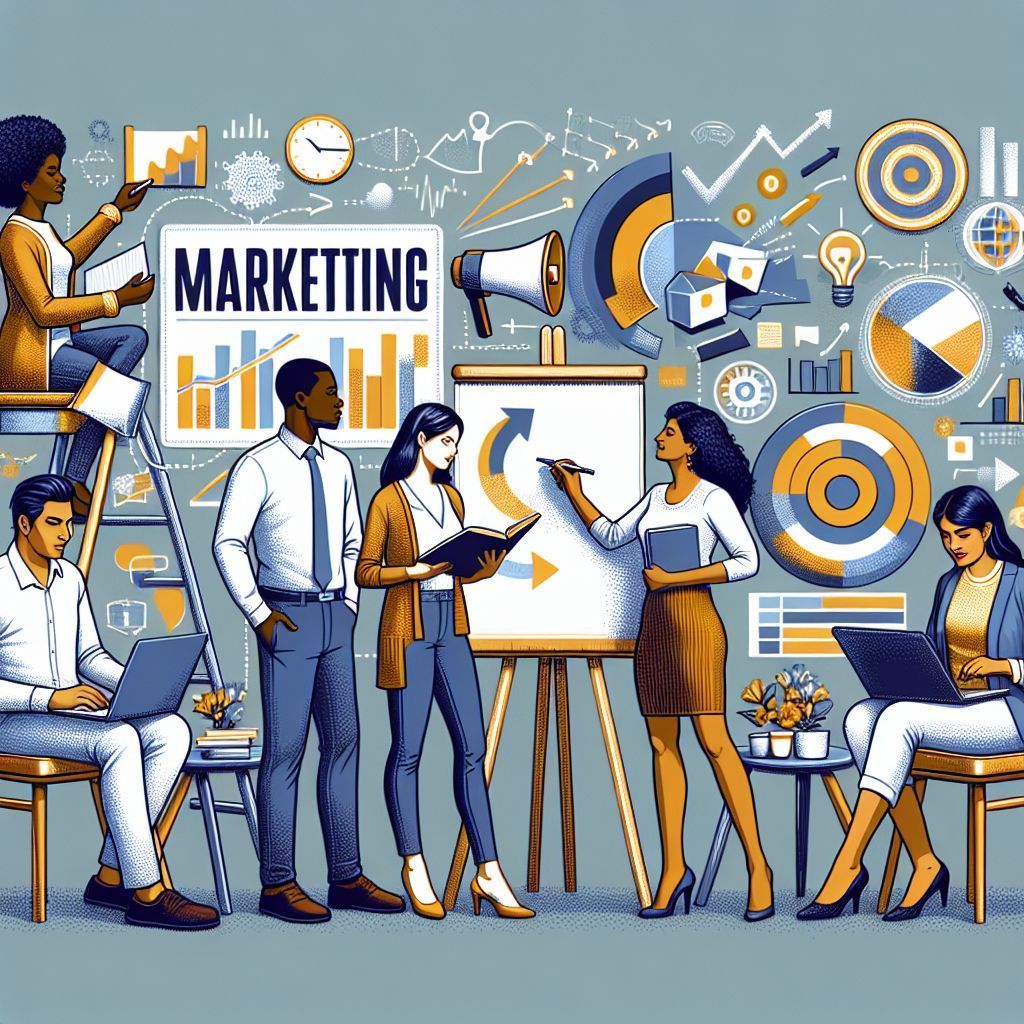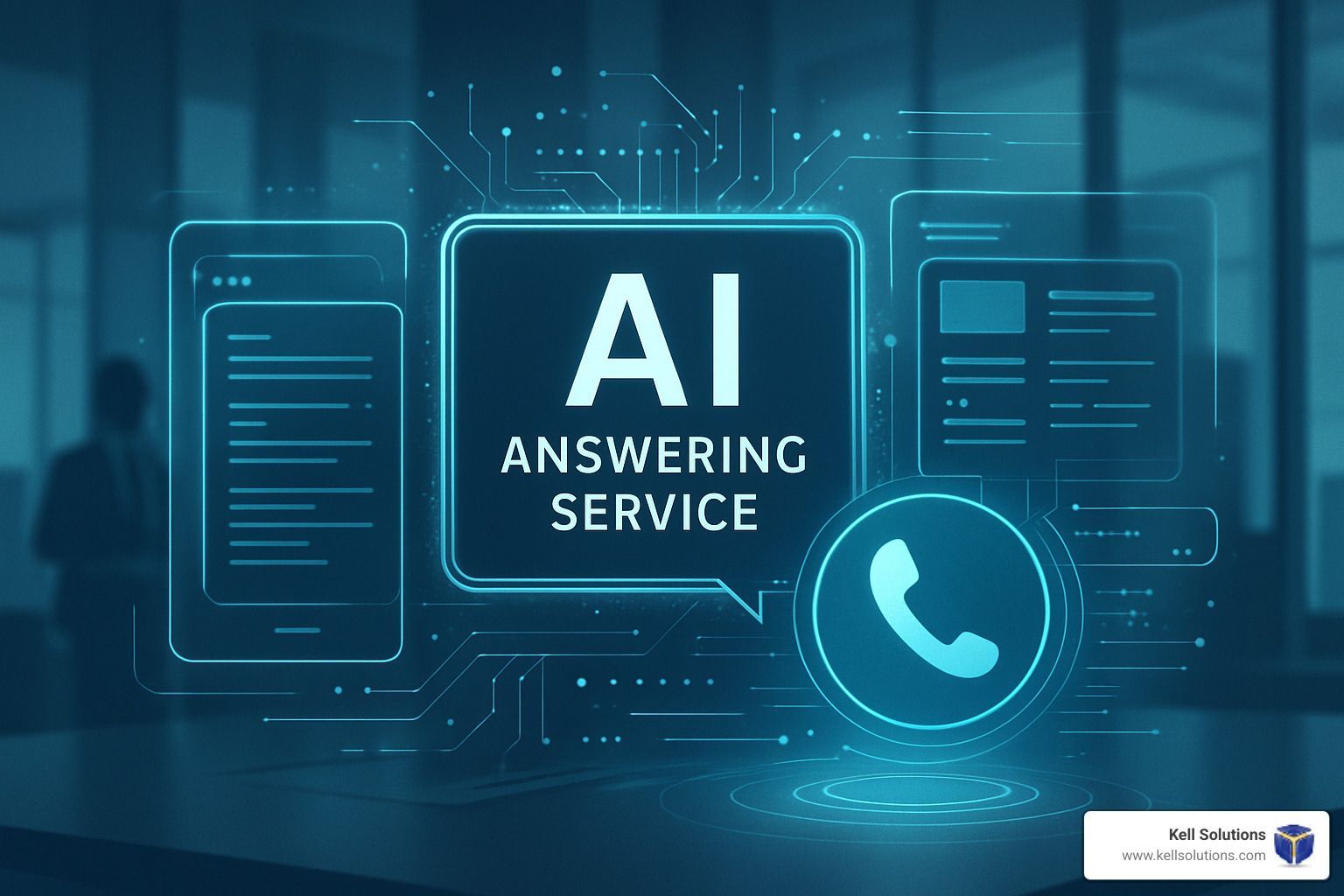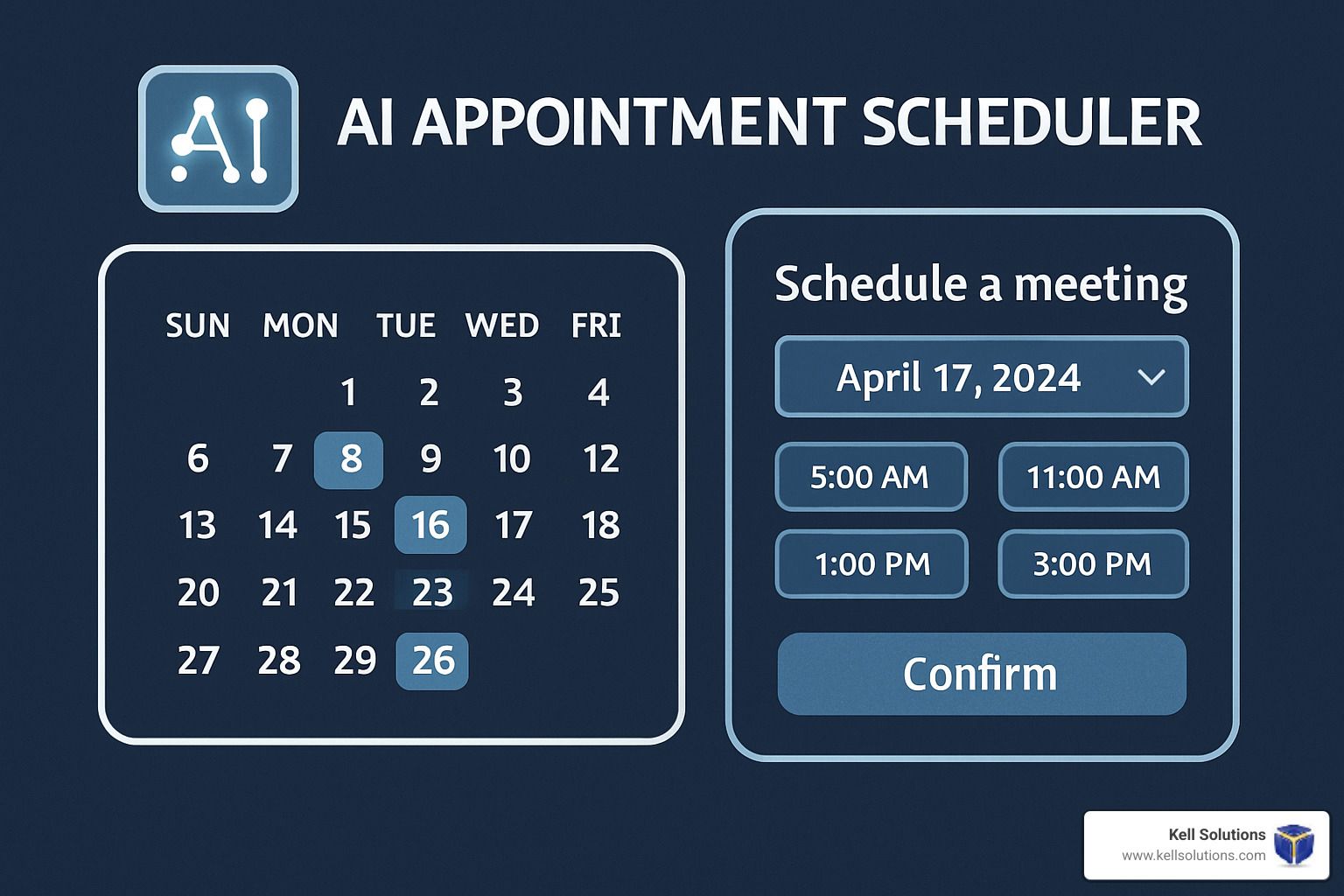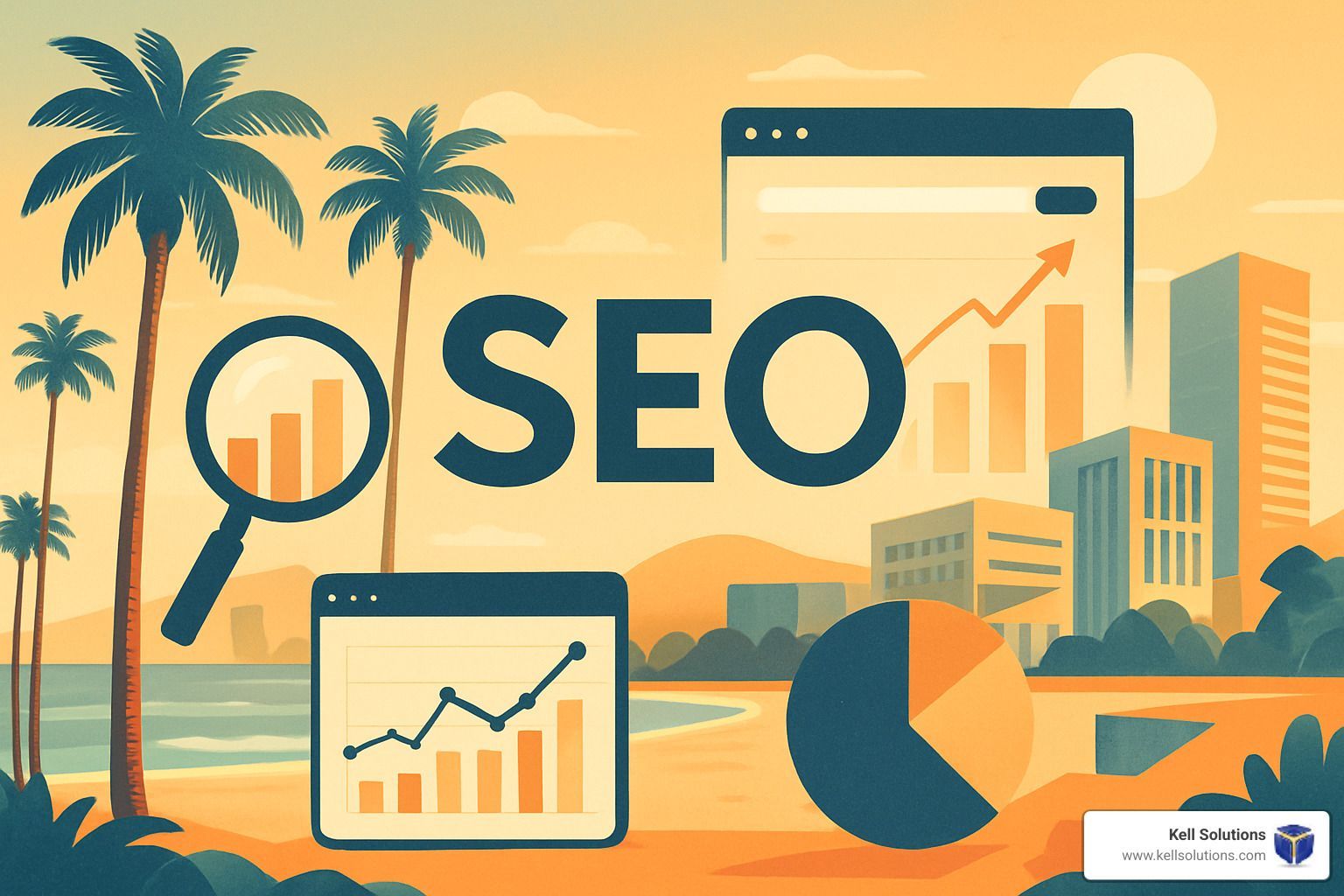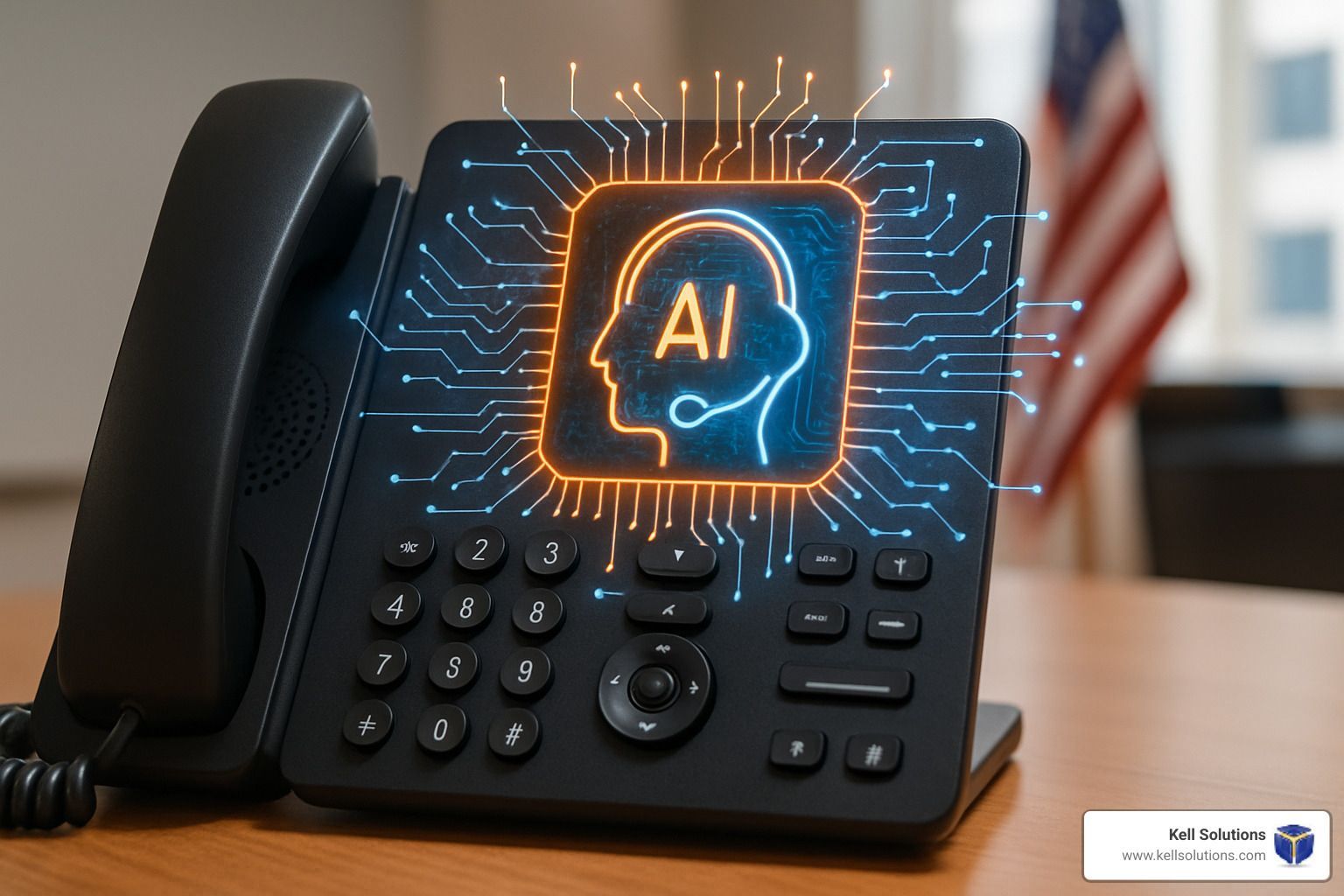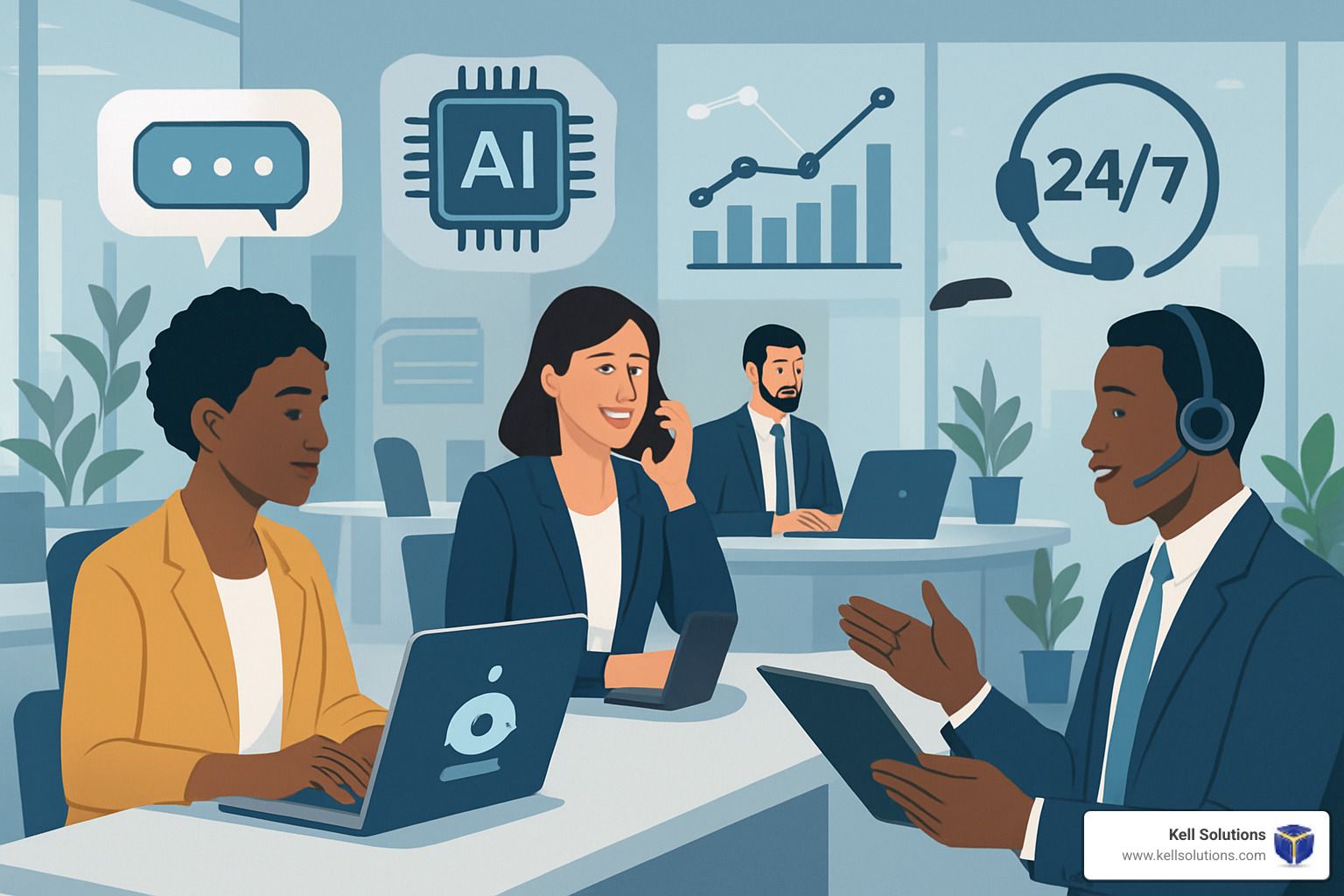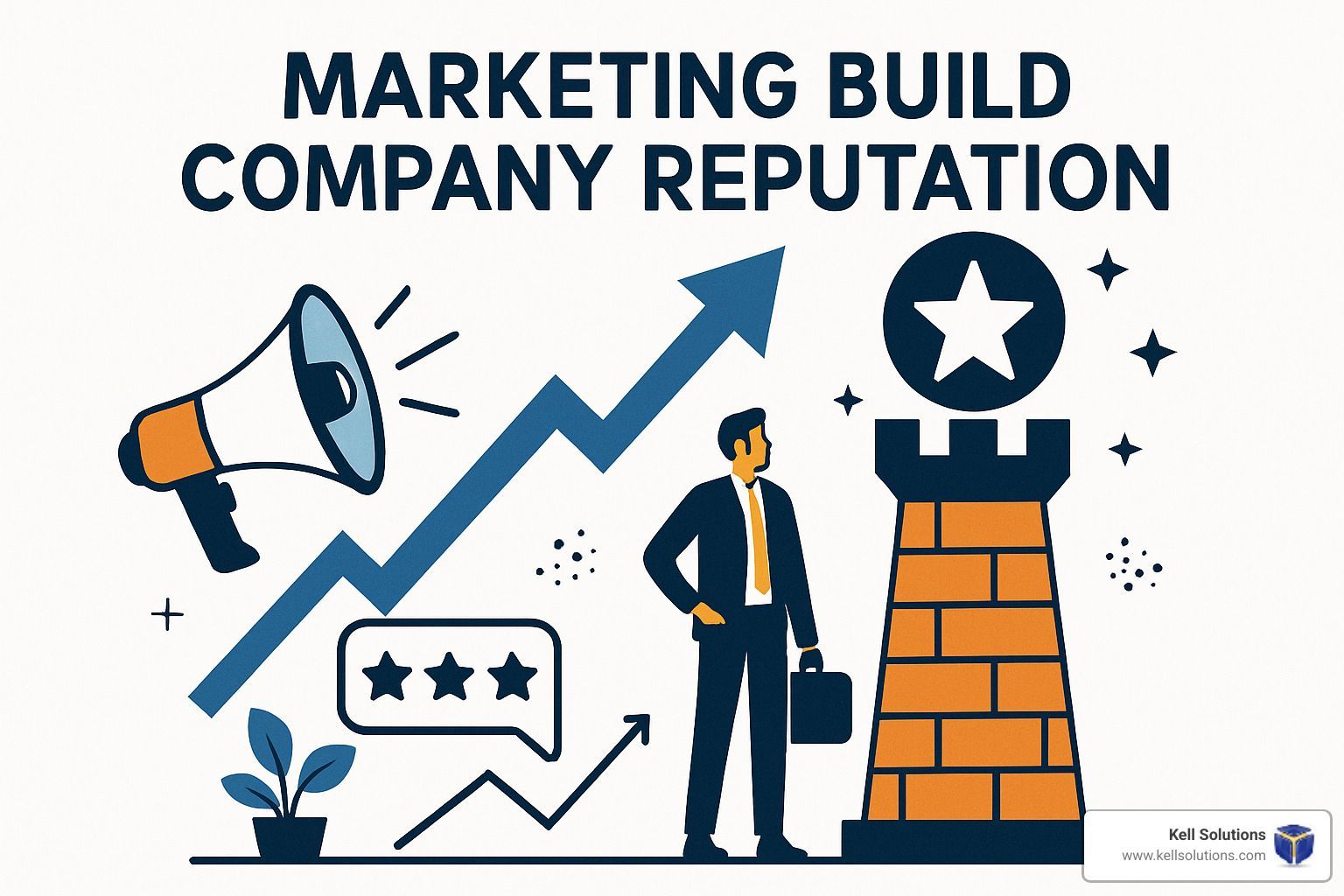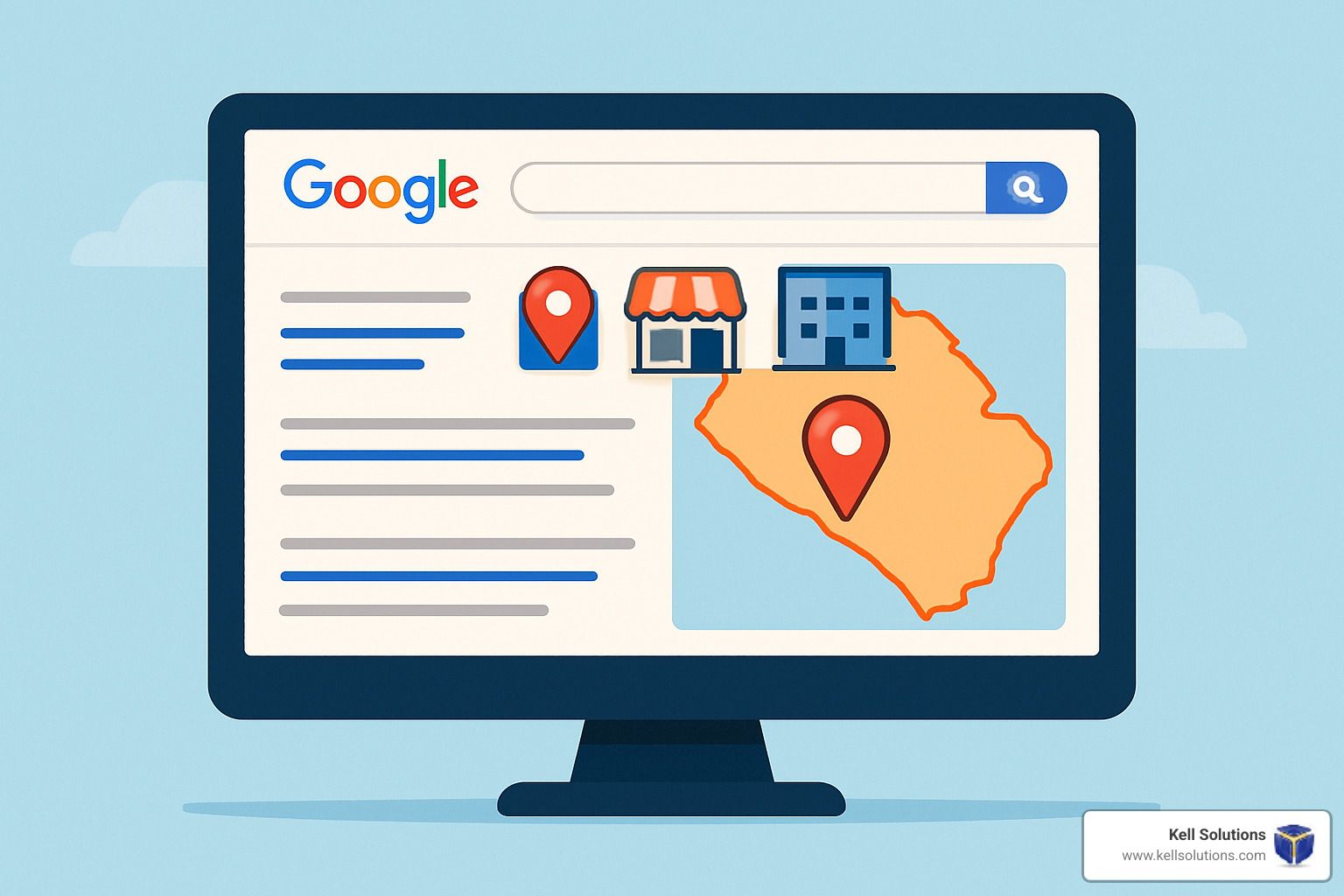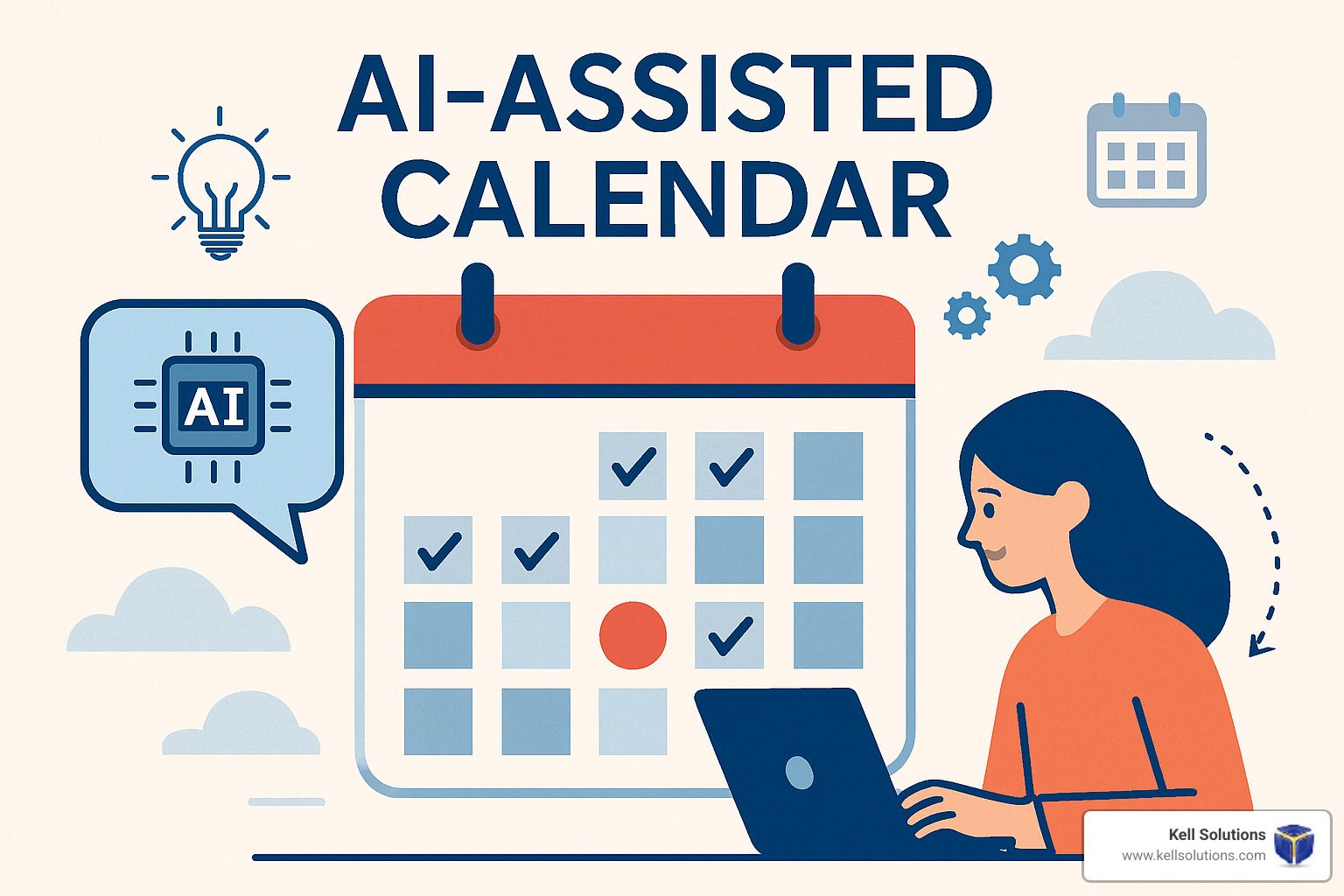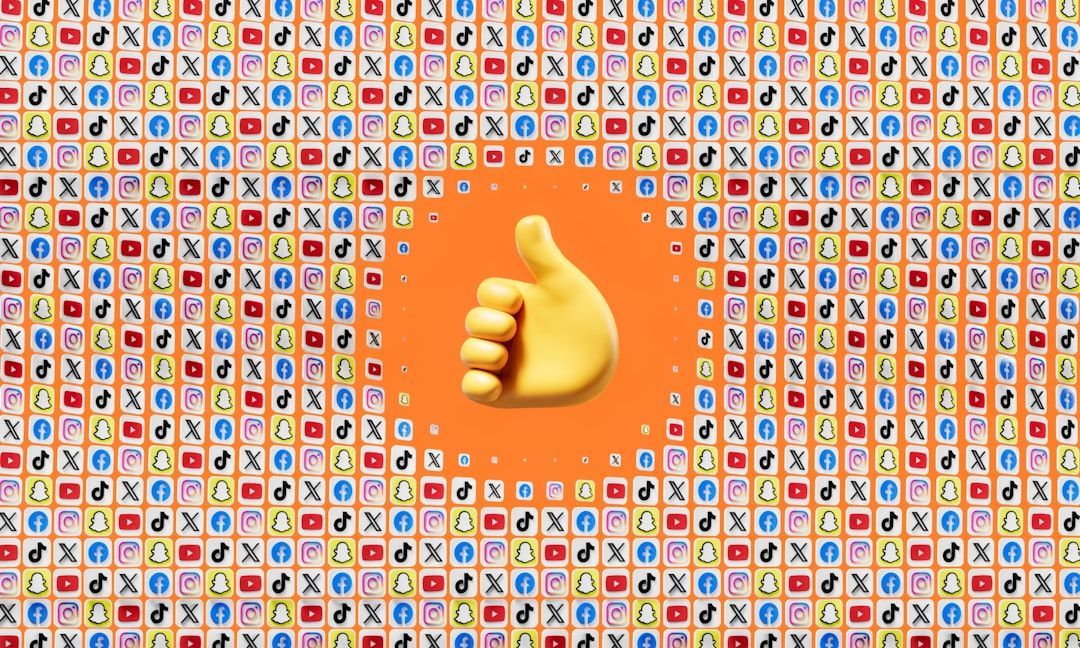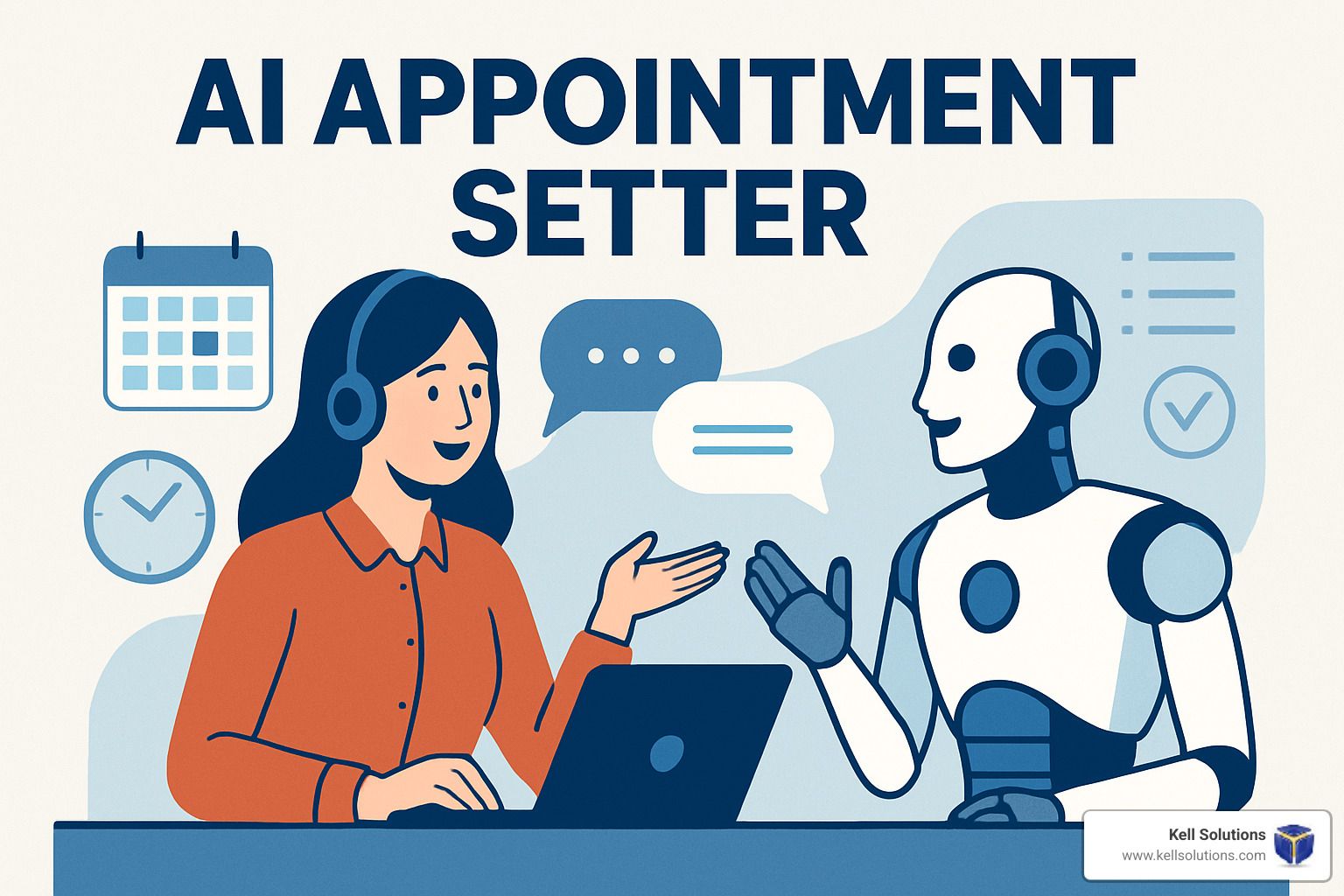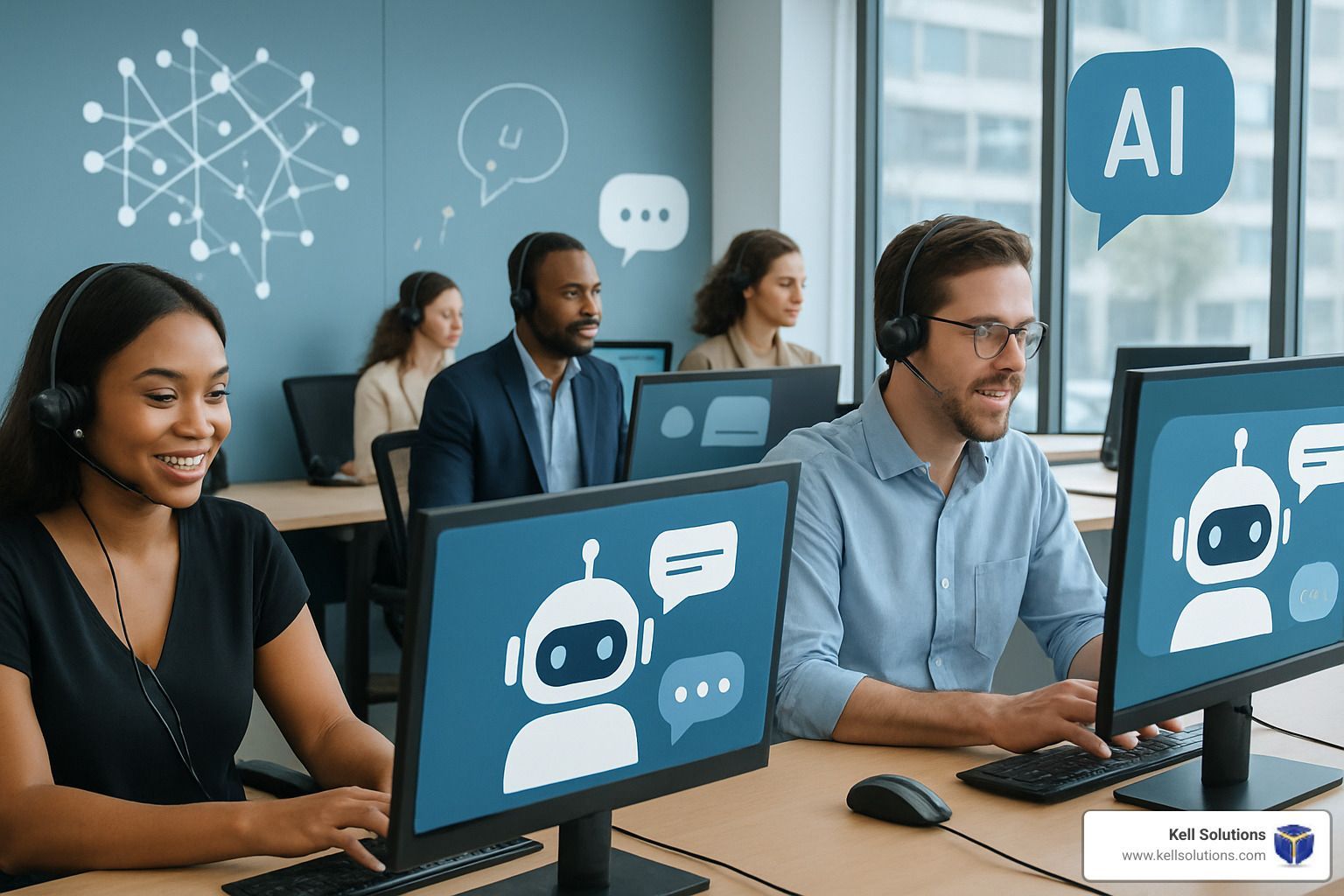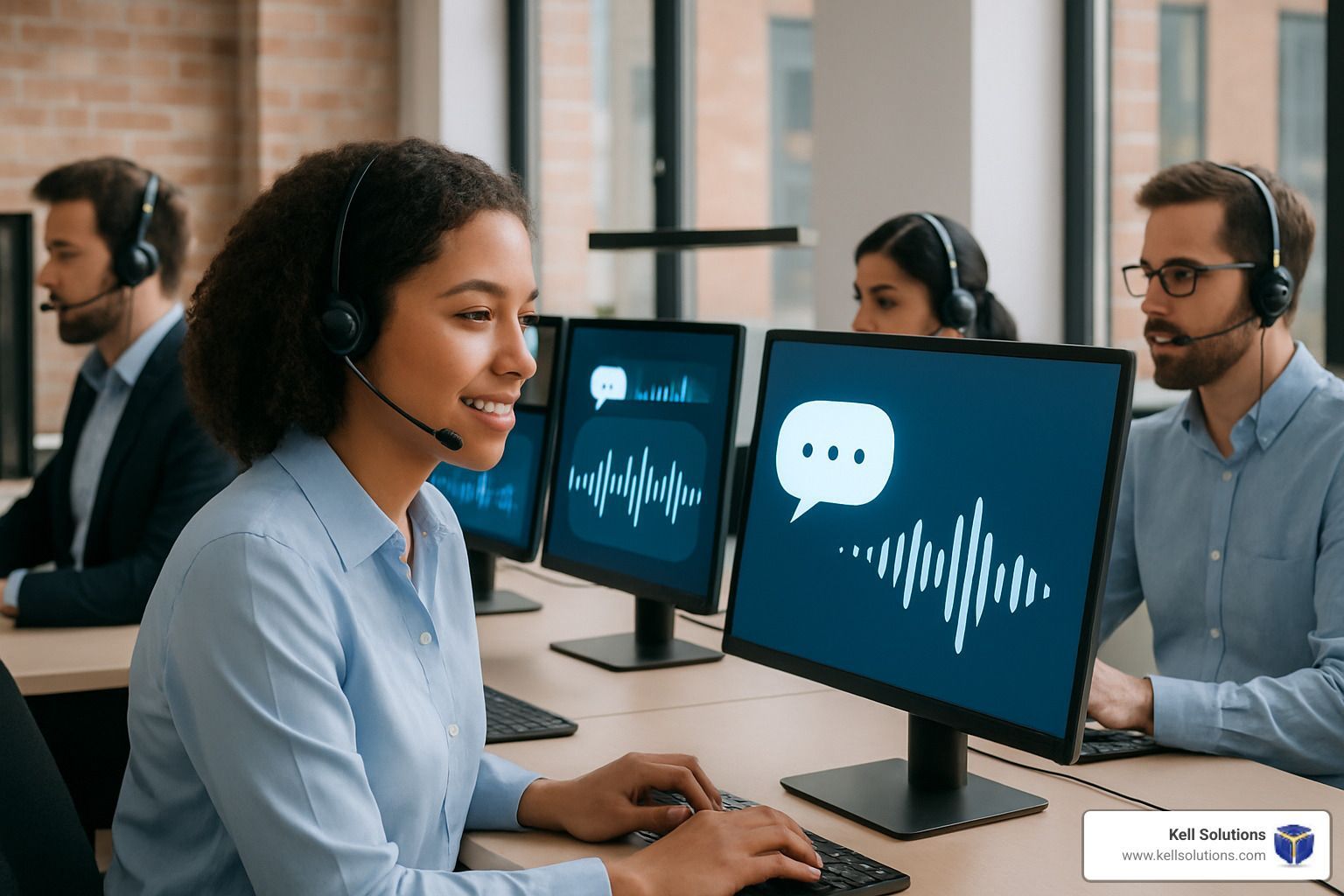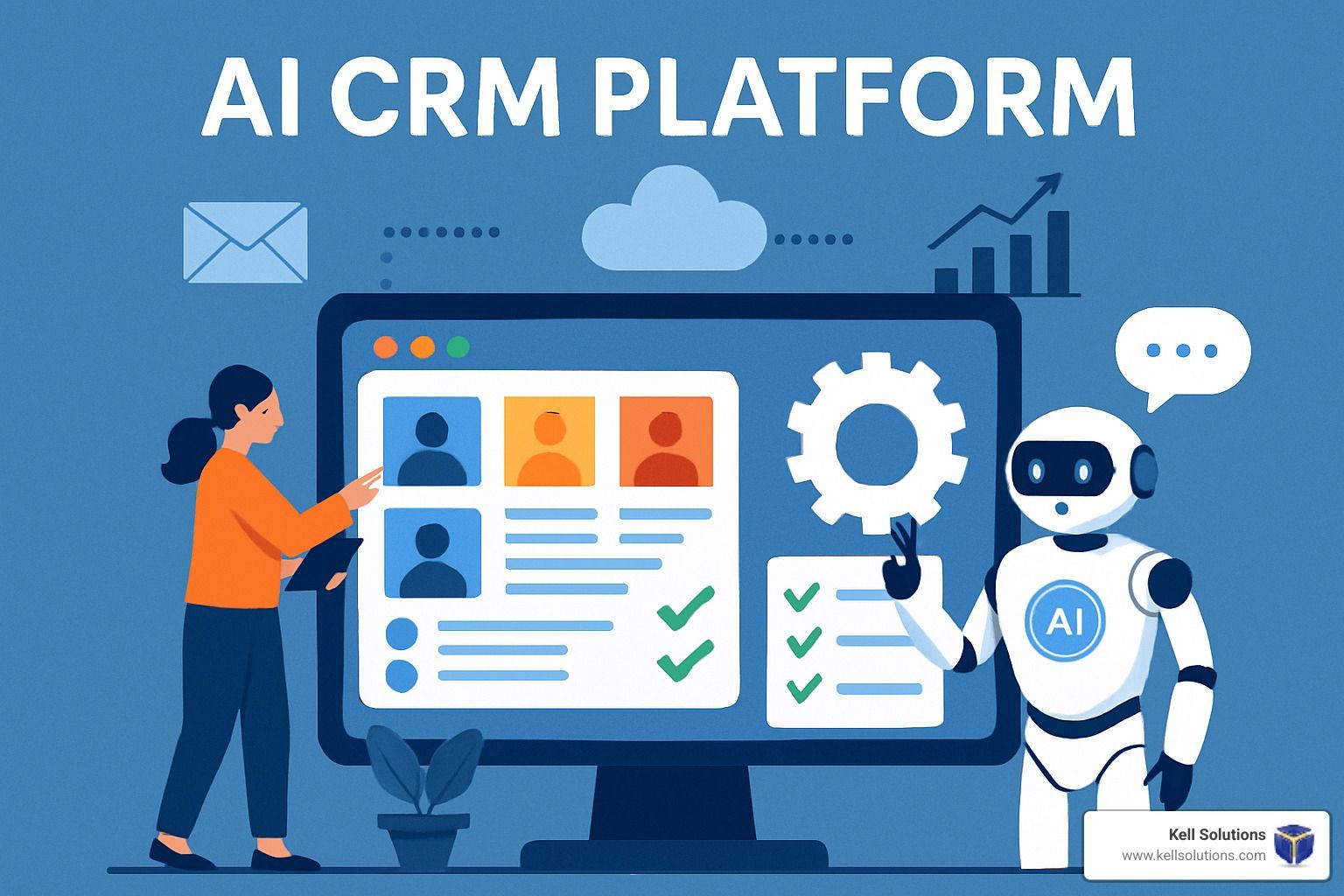Engage, Convert, Repeat – The Ultimate Customer Engagement Software Guide
Transform Your Customer Experience
Customer engagement software helps businesses build meaningful relationships with customers across multiple channels through personalized, data-driven interactions.
Customer engagement isn't just about responding to inquiries anymore. Modern engagement platforms unify your customer data, automate personalized interactions, and deliver consistent experiences across all channels.
With the right software, businesses can see remarkable results. Companies using advanced customer engagement tools have achieved up to 166% increases in conversions, 25% growth in customer lifetime value, and 93% reductions in service wait times.
Why this matters to small businesses: Unlike enterprise solutions that require massive budgets, today's customer engagement platforms offer scalable options that grow with your business. They help you compete with larger companies by creating the personalized experiences customers now expect.
I'm Gregg Kell, founder of Kell Web Solutions, and I've spent over 20 years helping businesses implement customer engagement software that drives real results without requiring technical expertise or massive teams. My focus is making powerful engagement technology accessible to small and mid-sized businesses that need practical, affordable solutions.
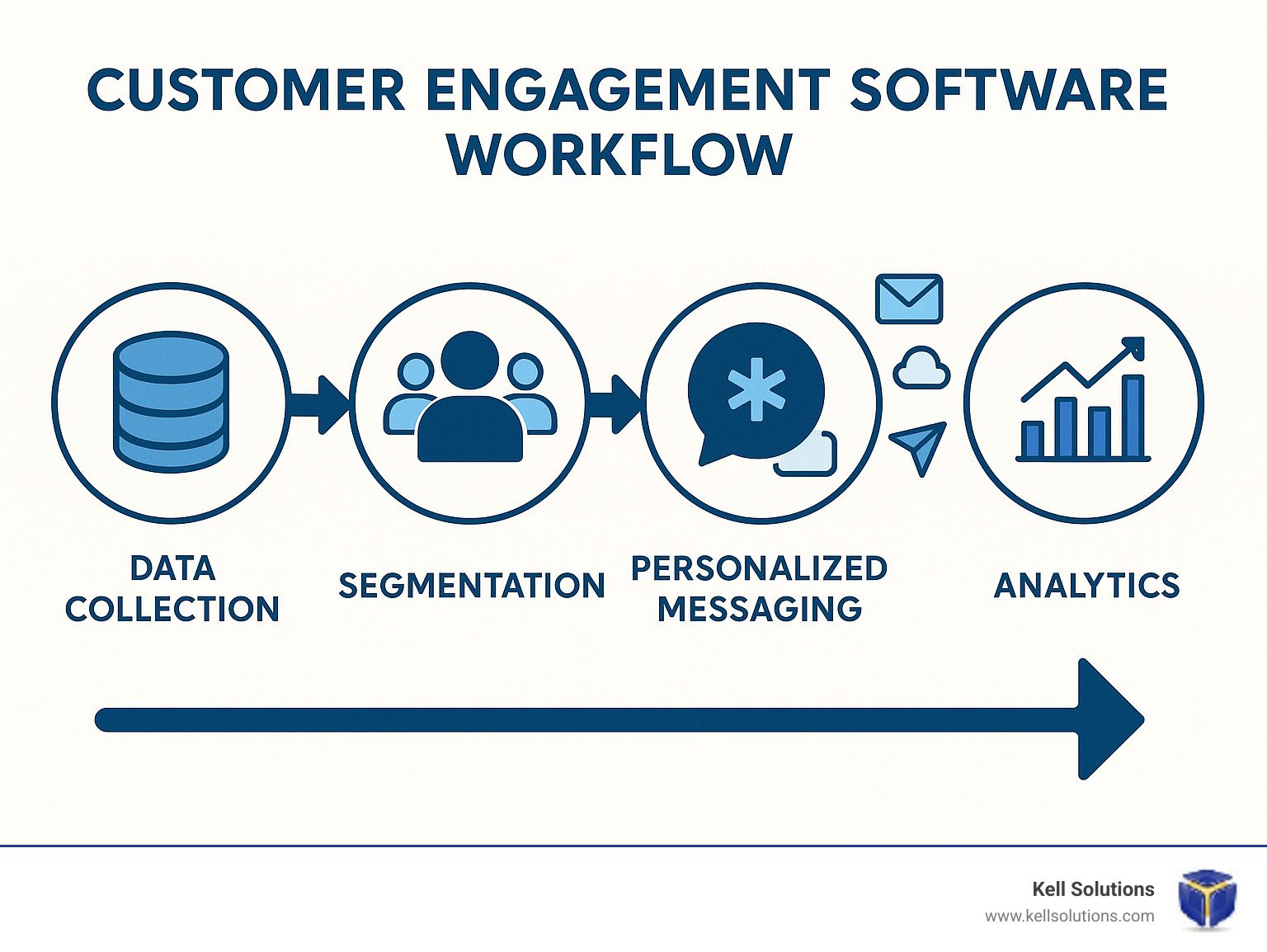
What is Customer Engagement Software?
Customer engagement software brings your customer relationships to life by connecting all the dots in their journey with your business. Think of it as the friendly concierge who remembers every customer's preferences and ensures they feel valued at every turn – from the moment they find your brand to long after they've made a purchase.
These platforms serve as the heartbeat of your customer interactions, pulling together information from various sources to create a complete picture of who your customers are and what they care about. This unified view helps you deliver experiences that feel personal and thoughtful, rather than generic and forgettable.
At its essence, good customer engagement software helps your business:
Create meaningful conversations with customers across every channel they use
Respond at just the right moment with messages that actually matter to them
Take routine communications off your plate through smart automation
Gather honest feedback that helps you improve what you offer
Build the kind of relationships that turn one-time buyers into loyal fans
The magic happens when these systems notice important customer behaviors and respond appropriately. For instance, when someone browses your pricing page multiple times but doesn't commit, your engagement software can automatically send a friendly follow-up with answers to common questions – just like a helpful sales associate would.
As one business owner shared after implementing an engagement platform: "We've recovered significant revenue and reduced manual labor in our billing collections process." These tools don't just make customers happier – they make your operations smoother too.
Customer Engagement Software vs CRM
People often mix up customer engagement software with CRM systems, but they serve different purposes in your business toolkit:
CRM systems are like your customer filing cabinet – they store contact information, track sales opportunities, and help you remember who said what. They're primarily backward-looking, documenting what's already happened.
Engagement platforms, on the other hand, are your conversation starter – they help you reach out in meaningful ways across multiple channels. They look both backward and forward, using past interactions to predict what might resonate next.
While CRMs are typically the domain of your sales team, engagement software brings together marketing, sales, and service departments to create a consistent experience.
Think of your CRM as knowing your customers, and your customer engagement software as actively building relationships with them. Most businesses find the sweet spot is using both together – letting your CRM feed information into your engagement platform to fuel more personal interactions.
Customer Engagement Software vs CDP
Customer Data Platforms (CDPs) and engagement software also have distinct but complementary roles:
CDPs excel at creating a unified view of each customer by connecting all their information across different systems. They're the detective that figures out that "Jane Smith" on your email list is the same person as "J. Smith" on your website.
Customer engagement software puts this knowledge into action by reaching out through the right channels with relevant messages. They're the communicator that uses what the detective finded.
While CDPs focus on organizing first-party data and creating detailed audience segments, engagement platforms execute campaigns that speak directly to those segments.
As one marketing expert nicely puts it: "When powered by data, it's more than a message, it's a relationship." The CDP builds understanding, while the engagement platform turns that understanding into meaningful conversations.
Many modern solutions now combine these capabilities, creating unified systems that both understand your customers and help you connect with them naturally. This integration makes it easier for businesses of all sizes to deliver the personalized experiences today's customers expect.
Why Invest in Customer Engagement Software – Benefits & ROI
Investing in customer engagement software isn't just a nice-to-have technology upgrade—it's a strategic move that delivers concrete, measurable returns across your entire business. Let's explore the real-world benefits that make this investment so worthwhile.
Increased Customer Lifetime Value (CLV)
When you connect with customers in more meaningful ways, they stick around longer and spend more. Take fashion retailer NA-KD, who saw their customer lifetime value jump by an impressive 25% after unifying their customer data and creating truly personalized experiences. The best part? They achieved a remarkable 72x return on their investment within just a year.
Higher Conversion Rates
There's something powerful about reaching people with the right message at exactly the right moment. Toyota finded this when they implemented personalized engagement tactics, resulting in a stunning 166% increase in test drive applications. Similarly, Slazenger watched their customer acquisition soar by 700% with a 49x ROI in just eight weeks through smartly personalized campaigns.
Reduced Customer Churn
One of the most valuable aspects of modern customer engagement software is its ability to help you spot potential problems before customers walk away. A leading food retailer managed to slash their cart abandonment rate by 61% while boosting their monthly average order value by 38% using WhatsApp Commerce—proving that engaging customers on their preferred channels makes all the difference.
Marketing Efficiency Gains
Why waste marketing dollars on shots in the dark? With AI-driven targeting and automation, you can focus your resources where they'll have the biggest impact. Leroy Merlin leveraged personalized engagement strategies to achieve an 8.8% increase in eCommerce revenue by concentrating on their highest-potential customer segments.
Customer Service Cost Savings
Great customer service doesn't have to break the bank. Renault cut their customer service wait times by a remarkable 93% by consolidating customer data and implementing AI-powered virtual assistants. The result? Happier customers and lower support costs—a win-win scenario that directly impacts the bottom line.
According to research from McKinsey, companies that excel at personalization generate 40% more revenue from those activities than average companies. This "personalization premium" shows just how significant the ROI potential is when you implement the right engagement tools.
For small businesses, these benefits can be truly transformative. As one business owner shared with us: "We've saved countless person-hours per week by automating our win-back campaigns, and those recovered customers now represent 15% of our monthly revenue."
At Kell Solutions, we've seen how even modest investments in customer engagement technology—like our AI voice agents—can deliver outsized returns through improved responsiveness, improved lead capture, and more consistent customer experiences. The beauty of today's engagement platforms is that they're accessible to businesses of all sizes, with flexible options that can grow alongside your company.
Core Features Checklist for Choosing Customer Engagement Software
When shopping for customer engagement software, it's like putting together your dream team of digital tools. You want a solution that not only meets your needs today but grows with you tomorrow. Here's what to look for:
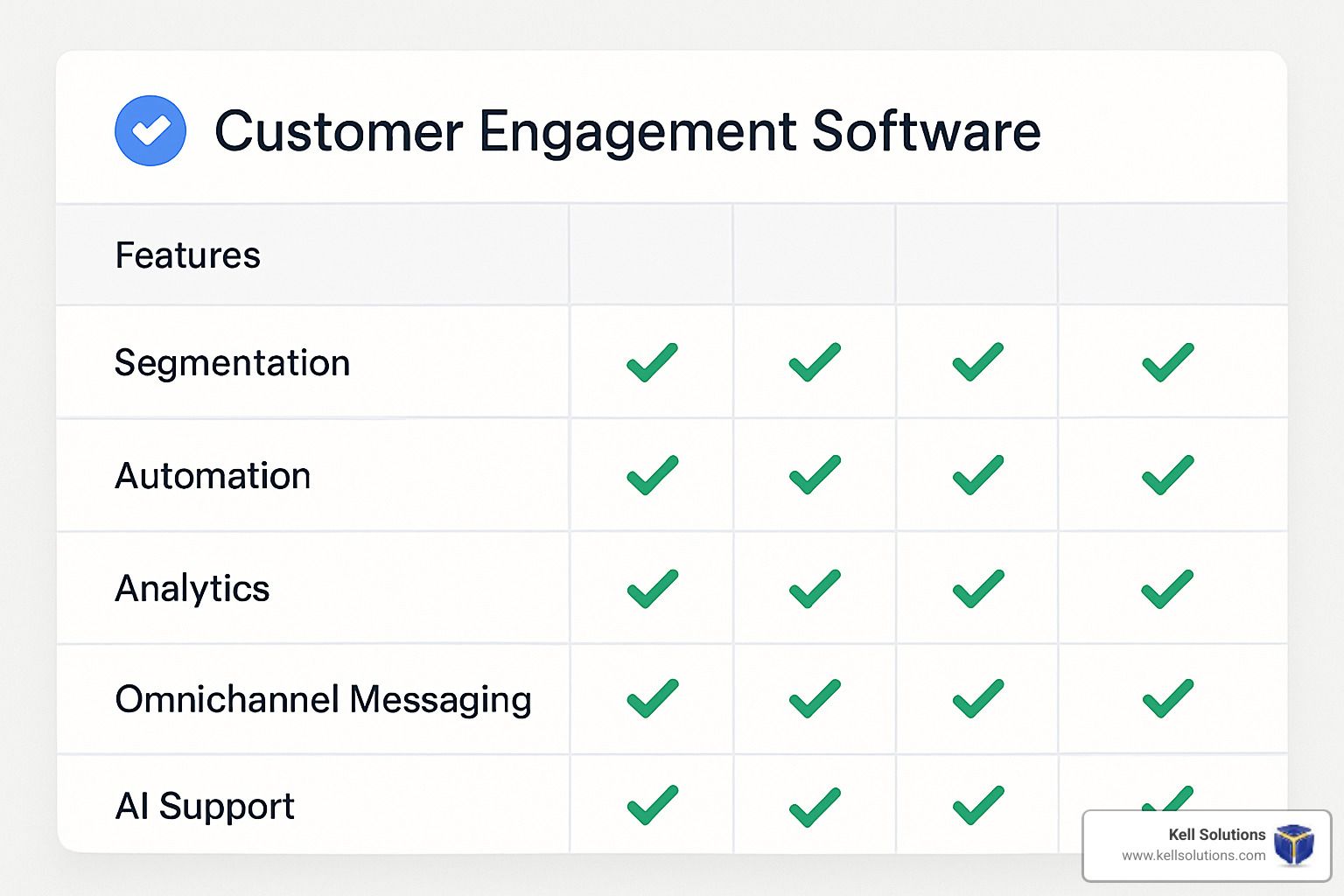
Real-Time Segmentation and Targeting
The heart of personalization lies in understanding exactly who your customers are. Great customer engagement software lets you slice and dice your audience based on their behaviors, preferences, and where they stand in their journey with you. Look for platforms that don't limit how many attributes you can track – the more granular you can get, the more personal your outreach becomes.
Journey Builder with Visual Workflow
Nobody wants to write code just to set up a simple welcome sequence. The best platforms offer intuitive visual builders where you can map out your customer's path with simple drag-and-drop elements. As one marketing director told us: "I love being able to see our workflow visualized instantly." When your team can literally see how customers move through different touchpoints, everyone gets on the same page faster.
Omnichannel Orchestration
Your customers don't think in channels – they think in experiences. Your engagement platform should connect seamlessly across email, SMS, push notifications, in-app messages, web personalization, and newer channels like WhatsApp. The magic happens when a customer starts a conversation on one channel and can continue it naturally on another.
A/B and Cohort Testing
Guessing is expensive; testing is smart. Look for robust testing capabilities that go beyond basic A/B tests to include more sophisticated cohort analysis. This lets you compare how different groups respond to your engagement strategies, helping you refine your approach based on real data, not hunches.
AI-Powered Recommendations and Personalization
AI isn't just fancy tech – it's practical magic for engagement. Companies like Avon have seen 23% higher conversions by using AI to match customers with products they're likely to love. When your software can predict what a customer wants before they even know it themselves, you've hit engagement gold.
Voice and Conversational AI
The human touch, available 24/7. Modern engagement now includes voice agents and chatbots that can handle routine questions, capture leads, and even book appointments while your team sleeps. At Kell Solutions, our VoiceGenie AI voice agents never miss a call, ensuring every potential customer gets immediate attention no matter when they reach out.
Analytics and Attribution
You can't improve what you can't measure. Strong customer engagement software should offer clear visibility into which strategies drive results. Look for tools that track conversion goals, show which channels deserve credit for sales, and let you analyze how different customer groups respond over time.
Integration Capabilities
Your engagement platform should play nicely with everything else in your tech stack. This means robust APIs, webhook support, and pre-built connections to the tools you already rely on. The last thing you need is another data silo that doesn't talk to your other systems.
Data Security and Compliance
With privacy laws tightening globally, security isn't optional. Ensure your platform maintains compliance with relevant regulations like GDPR, CCPA, and HIPAA. A SOC 2 Type II certification is a good sign the vendor takes security seriously, and check if they offer data residency options if your business operates internationally.
Scalability
The software that works for you at 100 customers should still work at 10,000. As one business architect shared about their platform: "It's a perfect fit from small team to scale." Look for solutions that won't buckle under increasing data volumes, growing user counts, or more complex campaigns as your business expands.
The right customer engagement software isn't just about checking boxes – it's about finding tools that feel like a natural extension of your team's capabilities. When software removes friction rather than creating it, your team can focus on building relationships instead of managing technology.
Types of Customer Engagement Platforms & Key Use Cases
When it comes to customer engagement software, there's no one-size-fits-all solution. Different businesses need different tools depending on their goals, industry, and customer base. Let's explore the main types of platforms and how they can help your business connect with customers more effectively.
Omnichannel Platforms
Think of omnichannel platforms as the Swiss Army knives of customer engagement. They bring together all your customer touchpoints under one roof, making it easier to create seamless experiences.
These comprehensive tools excel at creating consistent journeys that follow your customers wherever they go. Whether someone opens your email on Monday, visits your website on Wednesday, and calls your business on Friday, an omnichannel platform ensures they experience one coherent conversation with your brand.
For example, imagine a customer browses shoes on your website but doesn't purchase. An omnichannel platform might first send them an email reminder, then show them personalized ads on social media, and finally offer a special discount via text message—all working together as part of one strategic campaign.
These platforms shine when you need to orchestrate complex, multi-step campaigns that adapt based on how customers behave across different channels.
Customer Service-Centric Platforms
While omnichannel platforms focus on the entire customer journey, service-centric platforms zero in on support interactions and problem-solving. These specialized tools help you respond faster and solve issues more effectively.
Ticketing systems keep track of customer issues from first contact to resolution. Live chat provides immediate assistance when customers need it most. Knowledge bases and self-service portals empower customers to find answers on their own. And AI agents can handle routine questions automatically, freeing up your human team for more complex issues.
The impact can be dramatic. When Renault implemented AI-powered virtual assistants, they cut customer service wait times by 93%—making customers happier while reducing costs.
Here at Kell Solutions, our VoiceGenie AI voice agents provide round-the-clock call answering, ensuring you never miss an opportunity even at 2 AM. This always-on approach has become essential in today's world, where customers expect immediate responses regardless of business hours.
Social Media Engagement Tools
In our social-first world, dedicated tools for managing interactions across platforms like Instagram, Facebook, Twitter, and LinkedIn have become essential for many businesses.
Social media engagement platforms help you stay on top of conversations happening about your brand across multiple networks. They make it possible to schedule and publish content, respond to comments and messages, monitor brand mentions, and analyze sentiment—all from a single dashboard.
The real power of these tools lies in their ability to help you build genuine connections with your audience. Rather than posting into the void, you can actively participate in conversations, address concerns before they escalate, and highlight positive experiences.
For businesses where social media represents a significant customer touchpoint, these specialized tools provide the focus and features needed to nurture communities and build relationships at scale.
Each type of customer engagement software offers distinct advantages depending on your business priorities. Many companies find that combining approaches—perhaps an omnichannel solution for marketing with a service-centric platform for support—creates the most comprehensive engagement strategy. The key is choosing tools that align with how your customers prefer to connect and the resources you have available to manage them.
AI & First-Party Data: The Personalization Engine Behind Modern Engagement
The most effective customer engagement software leverages the powerful combination of artificial intelligence and first-party data to create truly personalized experiences:
The Power of First-Party Data
First-party data—information collected directly from your customers with their consent—has become the gold standard for personalization:
- It's more accurate and relevant than third-party data
- It's not affected by cookie deprecation and privacy changes
- It builds deeper customer relationships through demonstrated understanding
- It enables highly targeted segmentation and personalization
Modern engagement platforms offer native reverse ETL (Extract, Transform, Load) support to keep data warehouses in sync with engagement tools, ensuring your first-party data powers all customer interactions.
AI Applications in Customer Engagement
Artificial intelligence transforms how businesses engage customers:
- Predictive Analytics: AI identifies which customers are most likely to convert, churn, or respond to specific offers
- Natural Language Processing: Powers conversational interfaces that understand and respond to customer inquiries
- Voice Assistants: Provide 24/7 engagement through natural voice interactions
- Content Optimization: Automatically selects the most effective messaging for each customer
- Journey Orchestration: Determines the optimal next step in each customer's path
Leading engagement platforms deliver billions of messages and emails yearly, with billions of calls made and received per year. This massive scale is only possible through AI-powered automation and orchestration.
Our VoiceGenie AI at Kell Solutions represents the cutting edge of AI-powered engagement, with voice agents that can answer calls, qualify leads, and book appointments without human intervention—all while maintaining a natural, conversational experience.
Balancing Automation and Human Touch
The most successful engagement strategies combine AI efficiency with human warmth:
- Use AI for routine, repetitive interactions
- Allow human agents to focus on complex, high-value conversations
- Ensure seamless handoffs between automated and human support
- Continuously train AI systems with human feedback
As one customer service director noted: "Our AI handles 70% of initial inquiries, but knows exactly when to bring in our human team. This has reduced our response times while actually improving customer satisfaction scores."
For more insights on how AI can transform your customer engagement, check out our guide on Boosting Customer Engagement with AI Voice Assistants.
Evaluating and Selecting the Right Customer Engagement Software
Choosing the optimal customer engagement software requires a systematic approach:
Define Your Requirements
Start by mapping your specific engagement needs:
- Which channels are most important to your customers?
- What data sources need to be integrated?
- Which teams will use the platform (marketing, sales, service)?
- What level of personalization do you require?
- What volume of interactions will you need to manage?
Create a weighted scoring system based on your priorities. For example, a B2C eCommerce business might prioritize real-time behavioral triggers and omnichannel capabilities, while a B2B service provider might emphasize integration with their CRM and support for complex sales cycles.
Consider Total Cost of Ownership
Look beyond the subscription price to understand the full investment:
- Implementation and onboarding costs
- Integration development expenses
- Training requirements for your team
- Ongoing support and maintenance
- Potential need for specialized staff
Many platforms offer tiered pricing that scales with your usage, making enterprise-grade capabilities accessible to smaller businesses. At Kell Solutions, we believe powerful engagement tools should be affordable for businesses of all sizes.
Assess Integration Capabilities
Your engagement platform must work seamlessly with your existing systems:
- Check for pre-built integrations with your critical tools
- Evaluate API flexibility for custom integrations
- Consider webhook support for real-time data synchronization
- Ask about data import/export capabilities
The most valuable engagement platforms serve as the connective tissue between your various business systems, creating a unified view of the customer that informs all interactions.
Evaluate Vendor Support and Community
The level of support available can significantly impact your success:
- What onboarding assistance is provided?
- Is there 24/7 technical support?
- How active and helpful is the user community?
- What training resources are available?
- How frequently is the platform updated?
Request a Proof of Concept
Before making a final decision, conduct a limited trial or proof of concept:
- Test the platform with a subset of your customer base
- Implement one or two key use cases
- Measure the results against your current approach
- Gather feedback from your team members who will use the system
This hands-on experience will reveal practical considerations that might not be apparent from vendor demonstrations alone.
Implementation, Scaling & Best Practices
Bringing customer engagement software into your business doesn't have to be overwhelming. The most successful implementations follow a thoughtful, gradual approach that builds momentum over time.
Phased Implementation Approach
Think of implementing your engagement platform like learning to swim—you don't dive into the deep end on day one. Start in the shallow waters with your data foundation, getting all your customer information properly integrated. Then wade a bit deeper by mastering a single channel before introducing simple automated workflows.
"We started with just email," shared one marketing director whose team saw early success. "Once we had that running smoothly, we added SMS and in-app messaging. Taking it step by step meant we could celebrate small wins along the way, which kept everyone motivated."
This gradual expansion to cross-channel engagement and more sophisticated personalization creates a sustainable path to success without overwhelming your team or your customers.
Staff Training and Adoption
Even the most powerful customer engagement software gathers dust if your team doesn't accept it. Invest time in role-specific training that shows each department exactly how the platform helps them achieve their goals.
Create simple internal documentation that speaks to your specific implementation, not just generic platform features. One retail business boosted adoption by designating "engagement champions" in each department who received advanced training and then supported their colleagues.
"We created a weekly 'engagement win' spotlight where teams shared their most successful campaigns," explained a marketing director. "This friendly competition accelerated adoption and knowledge sharing while making the whole process more fun."
Continuous Optimization Through Testing
The beauty of modern engagement platforms lies in their ability to help you continuously improve. Make testing a regular habit, not an occasional activity. Simple A/B tests can reveal surprising insights about what resonates with your customers.
Toyota's impressive 166% increase in test drive applications didn't happen overnight—it came through systematic testing and refinement of their engagement strategies. They finded that subtle changes in message timing and personalization made dramatic differences in customer response.
Use cohort analysis to understand which customer segments respond to different approaches, and set up clear conversion goals so you can measure the impact of every engagement strategy. A weekly review of these analytics helps identify opportunities for improvement before they become obvious.
Balancing Automation and Personalization
Finding the sweet spot between efficiency and personal connection is crucial for engagement success. Customer engagement software excels at automating routine communications, but the best implementations ensure those automated messages still feel personal and relevant.
"Our welcome sequence is automated, but with so many personalization variables that customers regularly reply thinking they're talking to a real person," shared one customer success manager. Their secret? Dynamic content that adjusts based on specific customer attributes and behaviors.
Reserve human touchpoints for high-value interactions where personal connection matters most. When a customer reaches a significant milestone or encounters a complex issue, that's when the human touch creates the most impact.
Scaling Your Engagement Strategy
As your business grows, your engagement approach should evolve alongside it. The platforms that offer unlimited profile attributes enable increasingly precise targeting that can grow with your business needs.
Gradually increase message volume while carefully monitoring deliverability metrics to maintain high inbox placement. Add new channels based on actual customer preferences rather than simply chasing the latest trend. Most importantly, continue investing in your team's capabilities through ongoing training that keeps pace with platform improvements.
The most successful businesses view their customer engagement software implementation as an ongoing journey of improvement rather than a one-time project. This mindset of continuous optimization is what transforms good customer relationships into great ones, creating the personalized experiences that drive loyalty and growth.
For more insights on changing your client interactions through AI-driven personalization, explore our guide on Revolutionizing Client Interactions.
Security & Compliance Essentials
Protecting customer data within your customer engagement software is both a legal requirement and a trust imperative:
Regulatory Compliance
Ensure your platform supports compliance with relevant regulations:
- GDPR: For European customers and data subjects
- CCPA/CPRA: For California residents
- HIPAA: For healthcare-related information
- SOC 2 Type II: For overall security controls
- Industry-specific regulations: Such as FINRA for financial services
Look for platforms that maintain ISO 27001 certification, demonstrating their commitment to information security management.
Data Residency Options
With increasing data sovereignty requirements, your platform should offer:
- Regional data storage options (EU, US, etc.)
- Data processing agreements that specify storage locations
- Transparency about data movement between regions
This flexibility ensures you can meet the varying requirements of customers in different jurisdictions.
Security Best Practices
Beyond compliance, implement these security measures:
- Role-based access control to limit data exposure
- End-to-end encryption for sensitive communications
- Regular security audits and vulnerability testing
- Detailed audit logs of system access and changes
- Multi-factor authentication for all users
As one security officer noted: "Customer engagement platforms often contain your most sensitive customer data. Your security standards should reflect that importance."
Consent Management
With privacy concerns increasing, robust consent management is essential:
- Capture and store explicit consent for different communication channels
- Honor opt-out requests promptly across all systems
- Maintain detailed consent records for compliance purposes
- Implement preference centers where customers can control their engagement settings
These practices not only ensure compliance but also build trust with customers by demonstrating respect for their privacy preferences.
Frequently Asked Questions about Customer Engagement Software
How quickly can businesses see ROI from customer engagement software?
Return on investment timing isn't one-size-fits-all when it comes to customer engagement software. While most businesses begin seeing meaningful returns within 3-6 months, your timeline depends on how you implement the platform and what processes you're currently using.
The good news? Quick wins are absolutely possible. Many of our clients see immediate value from automating previously manual tasks like welcome emails or abandoned cart reminders. These "set it and forget it" workflows start delivering results almost immediately.
Take Slazenger's experience as an example – they achieved an impressive 49x ROI in just eight weeks with personalized engagement campaigns. This wasn't unusual magic; they simply focused on high-impact use cases first.
What we typically see is a snowball effect. As you add more channels and expand your use cases, your ROI compounds. The platform becomes more valuable as it touches more parts of your customer journey.
What metrics matter most for engagement success?
When measuring the impact of your customer engagement software, focus on these key performance indicators:
Engagement Rate shines a light on how many customers actually interact with your communications. This fundamental metric tells you if your messages are resonating or falling flat.
Conversion Rate takes engagement a step further by measuring how effectively those interactions lead to desired actions – whether that's making a purchase, booking an appointment, or signing up for an event.
Customer Lifetime Value (CLV) might be the most important metric of all, as it shows the total revenue generated by your average customer over time. Effective engagement should steadily increase this number.
Retention Rate helps you understand how well you're maintaining customer relationships. Since acquiring new customers costs significantly more than retaining existing ones, this metric directly impacts profitability.
Net Promoter Score (NPS) reveals how likely customers are to recommend your business to others – a powerful indicator of satisfaction and loyalty.
Don't just track these metrics as overall averages. The real insights come from breaking them down by customer segment. You'll likely find that different groups respond to different engagement approaches, allowing you to fine-tune your strategy for maximum impact.
How does customer engagement software integrate with existing martech?
No business wants another isolated tech silo. That's why modern customer engagement software is designed to connect seamlessly with your existing marketing technology stack through multiple integration methods.
Most platforms offer pre-built integrations that provide turnkey connections to popular CRMs like Salesforce, eCommerce platforms like Shopify, and analytics tools like Google Analytics. These plug-and-play connections make setup relatively painless.
For more customized needs, APIs (Application Programming Interfaces) allow developers to create custom connections between your engagement platform and proprietary systems. This flexibility ensures even unique tech stacks can work harmoniously.
Webhooks enable real-time data sharing when specific events occur, triggering immediate actions across systems. For example, when a customer makes a purchase in your eCommerce platform, a webhook can instantly update their profile in your engagement software and trigger a thank-you message.
Many modern platforms also support Reverse ETL processes that synchronize data between your data warehouse and engagement tools, ensuring all systems work from the same customer information.
The best engagement platforms don't just connect with your other tools – they serve as the orchestration layer that coordinates customer interactions across all your systems. This ensures customers receive consistent experiences regardless of which internal systems are involved in each touchpoint.
At Kell Solutions, we've seen how powerful these integrations can be, especially when our VoiceGenie AI voice agents connect with a company's existing CRM and scheduling systems. The magic happens when everything works together seamlessly, creating experiences that feel personal and effortless to your customers.
Conclusion
Customer engagement software has transformed from basic communication tools into sophisticated platforms that create personalized experiences throughout the entire customer journey. These powerful systems unite customer data, automate personalized interactions, and deliver consistent experiences across all channels—helping businesses of all sizes build stronger, more profitable relationships with their customers.
The most effective implementations strike a perfect balance between technology and strategy, combining efficient automation with genuine human connections. As AI capabilities continue to advance at a rapid pace, engagement platforms are becoming increasingly skilled at anticipating customer needs and delivering perfectly timed, relevant interactions that feel natural and helpful.
At Kell Solutions, we've witnessed how AI-powered engagement tools can revolutionize businesses by ensuring every opportunity for connection is captured. Our VoiceGenie AI voice agents answer calls 24/7, capture leads, and book appointments automatically—creating engaging customer experiences even when your human team is unavailable or focused on higher-value tasks.
The future of customer engagement lies in this seamless blend of AI automation and human expertise. When implemented thoughtfully, this combination creates experiences that feel both efficient and authentic. Customers get the immediate response they want, while businesses can scale their engagement efforts without sacrificing quality.
By selecting the right engagement platform and following the best practices outlined in this guide, you can build customer relationships that drive sustained growth and give you a meaningful advantage over competitors still using outdated engagement methods.
Ready to see how AI-powered voice agents can lift your customer engagement strategy? Request a free demo of VoiceGenie AI and find how always-on voice engagement can transform your business from the very first call.
📚 About the AuthorGregg Kell is a seasoned digital marketing strategist and founder of Kell Web Solutions, Inc., helping professional service firms grow through innovative AI-powered solutions like VoiceGenie AI. With over 20 years of experience in web development, lead generation, and business automation, Gregg is passionate about helping small businesses maximize growth and profitability through cutting-edge technologies.
When he's not helping businesses boost their bottom line, Gregg enjoys life by the beach in Laguna Beach, California, with his wife Debbie, celebrating over 40 years of marriage and entrepreneurial trips.
👉 Explore More from Gregg:
VoiceGenie AI Demo (https://my.duda.co/site/e9f6c7e1/null)Missed Call ROI Calculator (https://my.duda.co/site/e9f6c7e1/null)VoiceGenie AI Pricing (https://my.duda.co/site/e9f6c7e1/null)
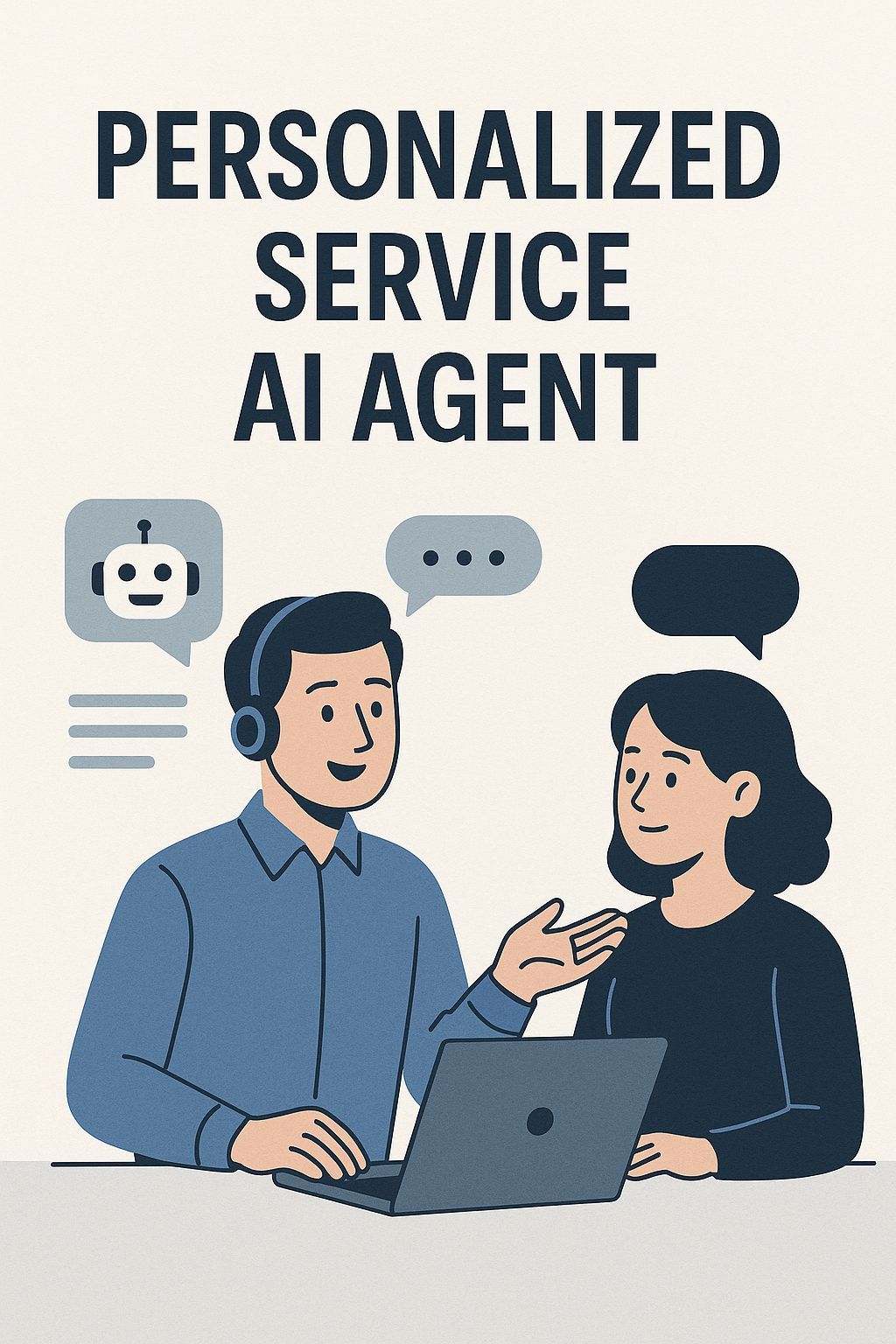

Orange County HVAC Google AI Overview Domination: 7 Proven Strategies to Capture Featured AI Results





